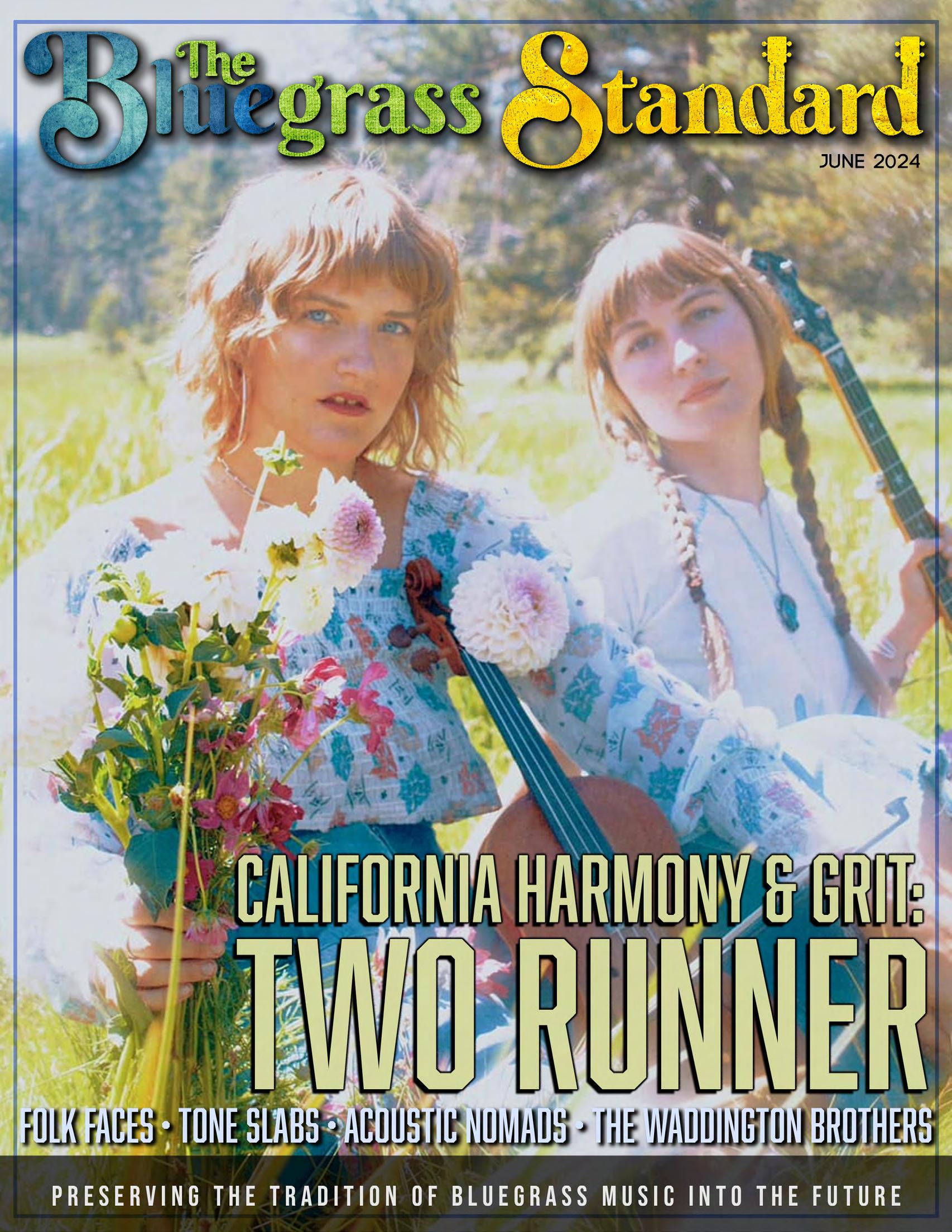
THE AMAZING BASS STAND
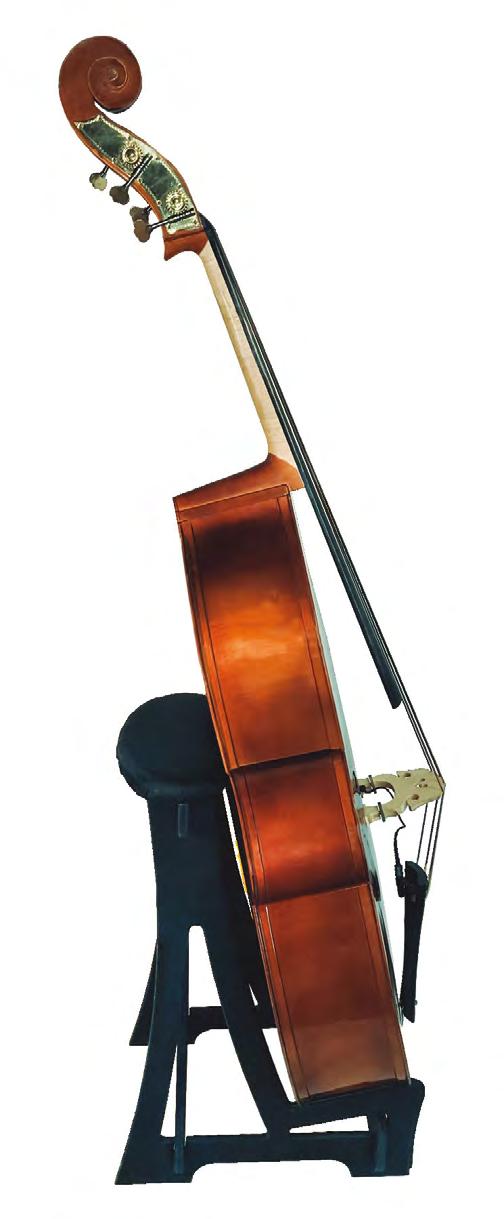
Keep your upright bass secure and a comfortable seat while you’re performing.
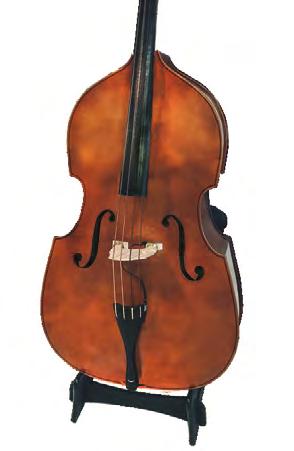
THE AMAZING DBL BASS BUGGIE®
We’re home of the original double bass transport.


STUDIO G STAND
A versatile option for guitarists in the studio or on the stage. Protection for your instrument and comfort for the performer.
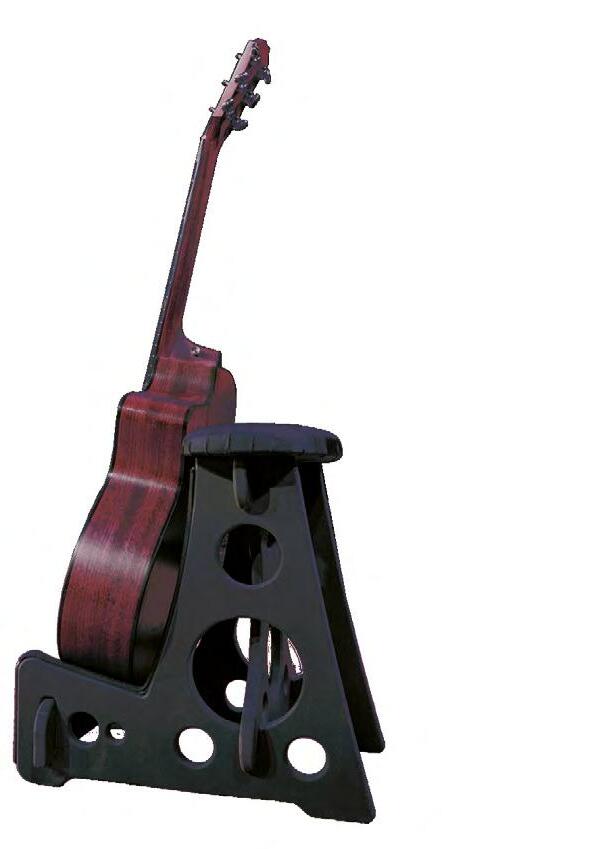

THE AMAZING MINI X STAND
Unique hinged “x” format for smaller stringed instruments such as violins, violas, mandolins, and most ukuleles.
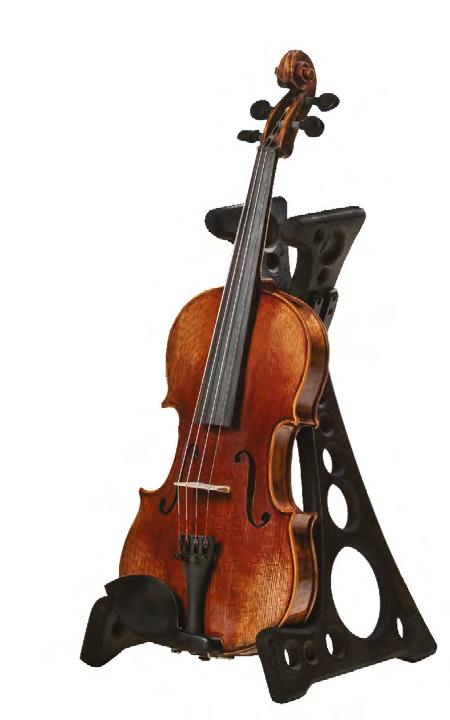

Follow us on: RCWilliamsCompany.com | 913.912.1083
©2022 RC Williams Company, LLC. Designed and manufactured by RC Williams. All rights reserved.
FOR YOUR
Find out more about our innovative products today!
Available
in red for an extra splash of color.
DESIGNED
BEST PERFORMANCE
Available in multiple heights and natural finish. 2

3


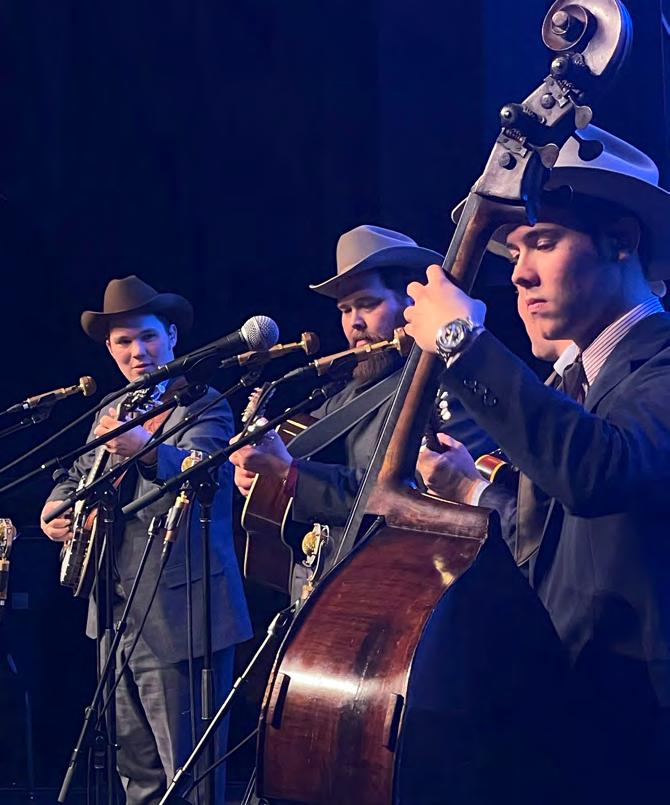


08 50 36 4 OUR CHOICE


Keith Barnacastle •


16 5 CONTENT THE ACOUSTIC NOMADS 08 ALABAMA BLUEGRASS ASSOC 12 THE BLUEGRASS BUS MUSEUM 16 NATALIE & DONNELL 22 CONNECTING HUMANITY 26 TONE SLABS 30 FOLK FACES 36 HOLLER CHOIR 38 TWO RUNNER 44 THE WADDINGTON BROTHERS 50 BECKY BULLER 56 REGIONAL PIZZA STYLES 60 FAN FOTOS 66
Publisher The Bluegrass Standard is a life-long dream of Keith Barnacastle, who grew up in Meridian, Mississippi. For three years, Keith brought the Suits, Boots and Bluegrass Festival to Meridian. Now, with the Bluegrass Standard, Keith’s enthusiasm for the music, and his vision of its future, reaches a nationwide audience every month! Keith@TheBluegrassStandard.com

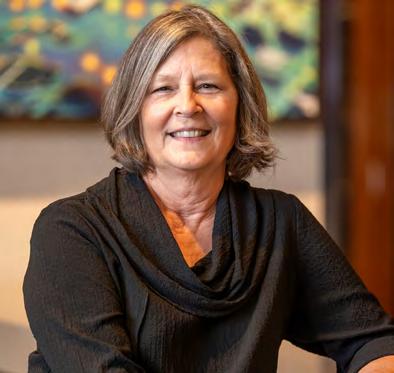

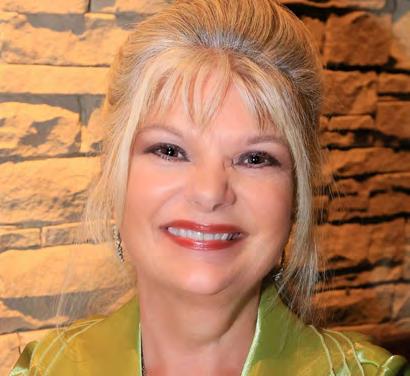

Our Staff

Richelle Putnam • Executive Editor/Writer
Richelle Putnam holds a BS in Marketing Management and an MA in Creative Writing. She is a Mississippi Arts Commission (MAC) Teaching Artist, two-time MAC Literary Arts Fellow, and Mississippi Humanities Speaker. Her fiction, poetry, essays, and articles have been published in many print and online literary journals and magazines. Among her six published books are a 2014 Moonbeam Children’s Book Awards Silver Medalist and a 2017 Foreword Indies Book Awards Bronze Medal winner. Visit her website at www.richelleputnam.com.
Rebekah Speer • Creative Director
Rebekah Speer has nearly twenty years in the music industry in Nashville, TN. She creates a unique “look” for every issue of The Bluegrass Standard, and enjoys learning about each artist. In addition to her creative work with The Bluegrass Standard, Rebekah also provides graphic design and technical support to a variety of clients. www.rebekahspeer.com
Susan Woelkers • Marketing
Susan traveled with a mixed ensemble at Trevecca Nazarene college as PR for the college. From there she moved on to working at Sony Music Nashville for 17 years in several compacities then transitioning on to the Nashville Songwritrers Association International (NSAI) where she was Sponsorship Director. The next step of her musical journey was to open her own business where she secured sponsorships for various events or companies in which the IBMA /World of Bluegrass was one of her clients.
Brent Davis • Contributor
Brent Davis produced documentaries, interview shows, and many other projects during a 40 year career in public media. He’s also the author of the bluegrass novel Raising Kane. Davis lives in Columbus, Ohio.
6


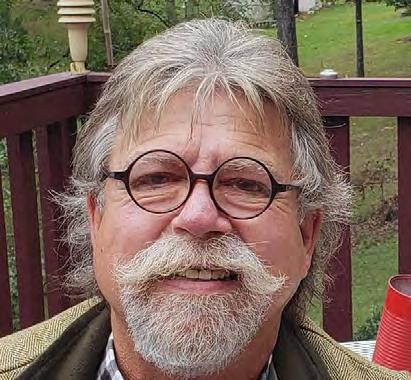


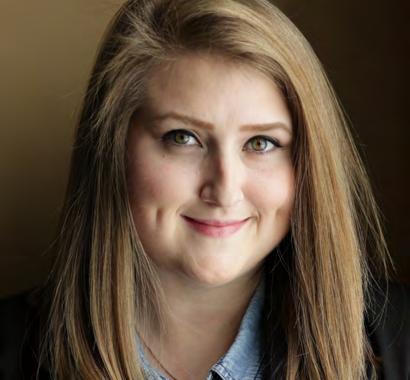
Mississippi Chris Sharp • Reviewer
Singer/Songwriter/Blogger and SilverWolf recording artist, Mississippi
Chris Sharp hails from remote Kemper County, near his hometown of Meridian. An original/founding cast member of the award-winning, long running radio show, The Sucarnochee Revue, as featured on Alabama and Mississippi Public Broadcasting, Chris performs with his daughter, Piper. Chris’s songs have been covered by The Del McCoury Band, The Henhouse Prowlers, and others. https://mississippichrissharp.blog
Susan Marquez • Journalist
Susan Marquez is a freelance writer based in Madison, Mississippi and a Mississippi Arts Commission Roster Artist. After a 20+ year career in advertising and marketing, she began a professional writing career in 2001. Since that time she has written over 2000 articles which have been published in magazines, newspapers, business journals, trade publications.
Kara Martinez Bachman • Journalist
Kara Martinez Bachman is a nonfiction author, book and magazine editor, and freelance writer. A former staff entertainment reporter, columnist and community news editor for the New Orleans Times-Picayune, her music and culture reporting has also appeared on a freelance basis in dozens of regional, national and international publications.
Candace Nelson • Journalist
Candace Nelson is a marketing professional living in Charleston, West Virginia. She is the author of the book “The West Virginia Pepperoni Roll.” In her free time, Nelson travels and blogs about Appalachian food culture at CandaceLately.com. Find her on Twitter at @Candace07 or email CandaceRNelson@gmail.com.
7
The Acoustic Nomads
by Brent Davis



8
Spend time with the Acoustic Nomads, and you’ll take a musical journey from the Andes to Appalachia.
This Boston-based quartet combines jazz, bluegrass, old-time, and South American folkloric music traditions to create a unique and enthralling soundscape that transcends labels and categories.
“The big question that it kind of makes me wonder about is, what does it mean to be American? What is or isn’t American?”

had deep jazz roots before he discovered and embraced bluegrass. Fiore Salas sings and plays the guitar and the Venezuelan cuatro--a four-string folk instrument that resembles a small guitar.


says Noah Harrington, who sings and plays upright bass in the band. The very nature of American identity has always been an amalgamation of things brought, things shared, and things invented together. And I think that remains very true with what we’re doing.”
Band leaders Harrington and Maurizio Fiore Salas met as students at the Berklee College of Music in Boston. Harrington
“I was born and raised in Venezuela,” Fiore Salas explains. “I did not grow up with folkloric or traditional music in any way. I started playing the guitar when I was about ten, and I just kind of played everything from rock and roll to punk. And when I was about 15 I discovered the cuatro, which is the national instrument of Venezuela that we play all over the country. And I was just very attracted to it.”
Even as he was studying jazz guitar, his growing fascination with the cuatro led him to explore the South American music genres in which it plays a prominent role. When he arrived at Berklee and met Harrington, he had decided the cuatro would be his primary instrument.
9
“So it was kind of like the ingredients were there for what ended up being this thesis statement and this broth, as we may call it, of the combining of North and South America,” says Fiore Salas.
Mandolinist Ethan Setiawan, a winner of the National Mandolin Championships, strengthens the band’s bluegrass chops. Fiddler Clara Rose is well-versed in bluegrass, Celtic, Swedish, blues, Balkan,
comes very much from African music. Think about the origins of the banjo itself, or even just the way people approach rhythm and polyrhythm and that kind of harmony. There’s so much cultural crosspollination that has happened, not just across the Atlantic Ocean, east to west, but also north to south.”
And the Acoustic Nomads aren’t the only ones interested in presenting South American music in a new context. On her latest album, On Banjo, banjoist Alison Brown plays a song from the Brazilian choro tradition. The musical duo Larry and Joe combines folk music from Venezuela and North Carolina.

and jazz folk traditions. Both are Berklee College of Music graduates.
In an Acoustic Nomads set, you might hear “Her Bright Smile Haunts Me Still,” an Appalachian fiddle tune, while the percussive cuatro provides accompaniment. You’re sure to hear a Joropo, a very fast Venezuelan waltz. Harrington says this combining of sounds and traditions has always been part of bluegrass.
“Bluegrass comes from Irish music, from Scottish music, all of those Northern European fiddle traditions. But it also
“Bluegrass is a genre that I think is very conservatively defined. But in reality, it’s changed an enormous amount in just 70 or so years and will likely continue to change going forward,” Harrington says.
Though their music comes from many traditions, The Acoustic Nomads have discovered elements shared by genres. For instance, there are parallels between bluegrass and Venezuelan folk music called Música Llanera.
“The banjo is mirrored in the cuatro, and the fiddle and mandolin are both reflected in the harp because we have a harp,” Fiore Salas says. All the roles are there.”
“There’s a very funny parallel aesthetic in the cowboy hats,” Harrington continues.
“You know that big old Stetson hat (Bill Monroe fiddler) Kenny Baker always has on? All the Música Llanera guys always


10


have that on. The album covers look very similar. And then you hear them singing. It’s high, it’s lonesome, it’s fast. It’s everything you want.”
In addition to being masters of their instruments, Harrington and Fiore Salas are powerful singers.
“When we first started, we were all doing just instrumental music. And we love that,” says Harrington. “But I think the biggest thing that we’ve done over the past year that has really made a difference is to bring in singing because there’s nothing that people connect with like the human voice.”
The Acoustic Nomads have found a unique identity and are eager to be heard.
Harrington says that’s their ambition as they appear at festivals and clubs and work on recordings.
“We’re trying to get out there and see more people and keep refining our craft and connecting with people and connecting people with each other. All over America. That’s our goal.”

11

Alabama Bluegrass Music Association
by Susan Marquez
For many, preserving and promoting bluegrass music is a mission. Such is the case with the Alabama Bluegrass Music Association (ABMA). The nonprofit organization was started in January 1996 by dedicated artists and fans to promote bluegrass music in Alabama.
Their mission is fulfilled through the organization’s newsletter, BamaGrass, and an annual festival to showcase Alabama bluegrass bands. “We also attend festivals around the state to provide information on other bluegrass events in Alabama, as well as promoting Alabama bluegrass artists and to give out membership information about the ABMA,” says Mickey Dooley, president of the association. “I have been a member of ABMA for twenty years, on the board of directors for ten years, and I’ve served as president for the past four years.”
For an annual membership fee of $25, members receive issues of BamaGrass mailed to their home or online and a discount to attend the Showcase of Bands. “The proceeds help to promote bluegrass, musicians, and festivals around the state,” says Mickey. Bands that have at least one ABMA member will receive a listing on the association’s website and in the BamaGrass newsletter.”
Sharon Camp is the editor of the newsletter, which is published eleven times a year. “The November and December issues are combined,” she explains. Sharon says the newsletter runs ads for festivals, bands, and mobile home dealers. “Bluegrassers love camping,” she laughs. “We also run regular articles monthly; mostly, all are bluegrass-related. We publish all upcoming bluegrass events in the state, including local jams and pickings, along with band listings.” There are currently 58 bands listed on the ABMA website. “We also publish jams and pickings held around the state at breweries, churches, parks, town halls, historic sites, and more. That alone is a good deal for only $25 a year.”
Mickey plays in the house band for the Pine Mountain Bluegrass Jamboree, a monthly jamboree held on the fourth Saturday from April through October. “It’s open for feature bands each month, many of whom are member bands from the ABMA.” Each jamboree begins with jamming at 1 p.m., an open stage at 3 p.m., and the house band playing at 5 p.m. The featured band or performer plays at 6 p.m. In June, a Pine Mountain Bluegrass and Barbeque fundraiser is held.
The biggest event of the year presented by the ABMA is the annual Bluegrass Showcase, held at the Gardendale Civic Center near Birmingham. The day begins with workshops starting at 9:00 am. “We always have some great workshops,” Mickey says. “We usually have a showmanship workshop to train band front men, where folks can learn how to manage a band and generally how to conduct themselves.” Other workshops include
12
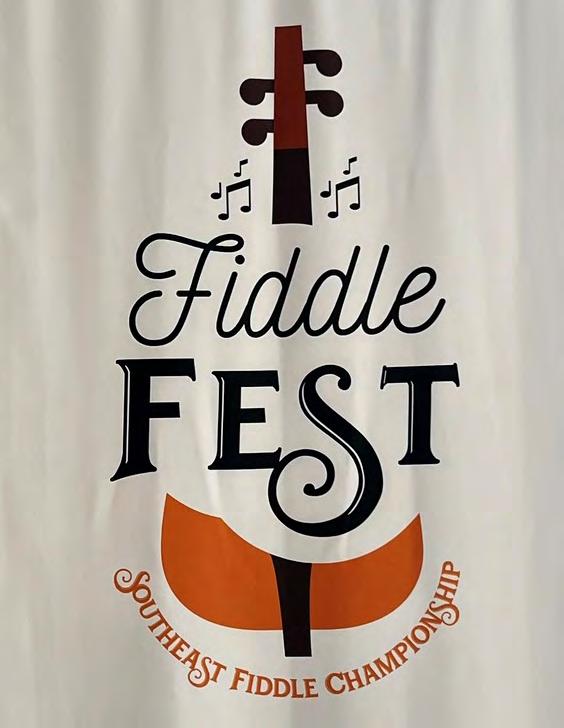
13
songwriting, a workshop for promoters, how to get grant money, and insurance for performers. “There is always a lot of conversation between performers on what works and what doesn’t.”
And, of course, there is music throughout the day. Bands play from 11:30 am to 5:20 pm. “There are six slots during the day, and names of bands are drawn from a hat to see who will have the opportunity to play,” says Mickey. “It’s a big deal to play because there are promoters on hand who come to see the bands. Many times, bands are hired on the spot to play at festivals and shows.” The event also features jam sessions and food trucks. “Our swap meet is always popular. People bring their instruments and other things to swap or sell.”
Mickey says that the largest percentage of the Alabama Bluegrass Music Association members are musicians, but there are also plenty of fans.



14




15

The Bluegrass Bus Museum
by Susan Marquez
16

17


Danny “Hootenanny” Clark had no choice on the type of music he would listen to as a child. He grew up in a home filled with bluegrass music from the time he was a baby. He was introduced to bluegrass music the first time he entered his home when he was just a few days old. “My father insisted there be no music in the hospital room when I was born. He wanted no music in the car on the way home.” When they arrived at the house, his father ran inside and put on a 78-rpm album of Flatt and Scruggs playing “Foggy Mountain Breakdown.” That was the first music that Danny heard, and he’s been listening to bluegrass music ever since.
Danny is the son of Donald Roy Clark, who watched his first episode of The Beverly Hillbillies in 1962. The native Californian became an avid fan of the show after hearing the opening theme song that first introduced him to the sound of Earl Scruggs’s banjo. His parents knew where to find Don when Lester Flatt and Earl Scruggs appeared on the show – he was planted in front of the television set. The twang of Scruggs’s banjo and the solid rhythm of Flatt’s guitar motivated young Don to buy his first Flatt and Scruggs album. Little did he know that album would start him on an unimaginable journey.
Don was enthralled by the many publicity photos of Flatt and Scruggs standing in front of their tour bus emblazoned with Martha White Flour, the long-time sponsor of The Grand Ole Opry. Hoping he could one day have a bus just like it, his childhood dreams came true in 1987 when Don purchased a 1955 Flexible bus from a feed and tackle shop in Baldwin, California. Don began driving the bus to festivals and getting autographs from the performers inside the bus door. His first autographs were from Bill Monroe and his son, James.
It wasn’t long before the bus’s door was filled with hundreds of autographs, and the bus began filling up with autographed photos, festival posters, and personal items donated to him by bluegrass and country legends.
18

The bus has traveled from coast to coast as the Bluegrass Bus Museum. It is said you can sit on the bus for hours and not see everything in Don’s impressive collection of bluegrass and country memorabilia. He rotates the carefully curated collection regularly and still takes donations of old pictures or something worthwhile to display on the bus.
The Bluegrass Bus Museum is a gathering place everywhere, with many of the biggest stars stopping in to visit and jam. Many of the bluegrass legends have visited the bus, including Bill Monroe, Earl Scruggs, Marty Stuart, and Ricky Skaggs. There have also been plenty of country legends, including Grandpa Jones and Dwight Yoakum.
“The bus has been my dad’s hobby, passion, and obsession,” says Danny. “It started in Southern California, and his goal was to drive it from California to Maine. He did it, dipping down into Florida and other places in the United States. It was like the Oscar Mayer Weinermobile when it rolled into a town. It always puts a smile on people’s faces.”

Danny now helps his dad, promoting the bus and archiving videos and audio recordings for future generations. Danny has extensive museum experience—he has worked for the Bluegrass Music Hall of Fame in Owensboro and the Country Music Hall of Fame in Nashville. He now resides in San Jose, California, where he plans events for the city.
Don is still the owner and operator of the Bluegrass Bus Museum. He and his wife reside in Goodlettsville, Tennessee, where they house the bus in the world-famous Bluegrass Barn. “Years ago, my parents wanted to be closer to the music industry, and they went to IBMA when it was in Owensboro. They met Lester Armistead there, who had a friend in Goodlettsville with property to sell.” The friend was banjo player Leroy Troy, who plays with Marty Stuart.
19


20

While the bus still travels to festivals, Don likes to keep it within a 200-mile radius. “The bus is getting old, and he wants to be careful to preserve it,” says Danny. Festival promoters pay to have the bus come to the festivals. “People love to tour the bus between acts.” Don sometimes hosts people in the barn. “They just need to contact me through the website to set it up.”
The Bluegrass Bus Museum has a YouTube channel where anyone can see videos of live performances that Don videoed with a shoulder-mount camera over fifteen years. “He has 400 to 500 VHS tapes that I’m transferring,” says Danny. “There are also videos on YouTube from the collections of other people.” Danny spends hours tracking down the names of everyone on stage in each video. “I want to give credit to everyone. This is a true labor of love.”

21

Natalie MacMaster & Donnell Leahy
by Susan Marquez
With different musical and cultural backgrounds, Natalie MacMaster and Donnell Leahy managed to find one another, and the two fiddlers have built a musical career and a family together.
Donnell is one of eleven children. His father’s family immigrated to Ontario from County Cork, Ireland, in 1825. “My mom is from Nova Scotia,” he adds. “I grew up with music. My parents were beef farmers. My dad played fiddle, and my mom played piano, sang, and step dance. All of my siblings grew up learning to play. I began playing fiddle at age three.” Donnell joined his brothers in a family band that opened for 176 shows on Shania Twain’s world tour.
Natalie, Donnell’s wife and musical collaborator, had a different upbringing. “I grew up on Cape Breton Island in Nova Scotia,” she says. “There was a strong Scottish ancestry there, and I grew up in that culture.” As a child, she played locally before traveling and making albums. “I have two brothers who played music but were more into sports.”
Donnell says music was never a luxury in the MacMaster household. “It was a necessity. First thing every morning, Natalie’s mom would put on fiddle music, and it was the soundtrack of their day.” He explains that before the internet and other technology, visiting neighbors for a hot cup of tea and a fiddle tune or two was common. “It was how people connected with one another during the long Canadian winters.”
When she was 19, Natalie was attending a teacher’s college. She received a phone call one day from Donnell. “He said, ‘You don’t know me, but I’m playing in town tonight, and I’d like for you to come to the
show.’” Natalie knew who Donnell was –she had one of his cassettes at home. “We dated for two years.” The couple broke up for the next decade before finding their way into one another’s hearts again. “I was 30, and Donnell was 34 when we married,” says Natalie. “We didn’t play together for the first five years of our marriage. We just weren’t an easy fit musically; our styles were so different.”
But they found their musical groove and began playing shows together. The young family grew and because Natalie was nursing, their children accompanied them on the road. “Our oldest, Mary Frances, was four years old and playing backstage when she surprised us and said she wanted to join us onstage. That was followed by her brother saying if she could be on stage, he wanted to be on stage too.” Gradually, six of the couple’s seven children joined them in their act. “It’s not something we forced on them,” Donnell says. “Each of them gravitated towards music, probably because they saw their siblings doing it.”
Natalie says having the children with them is one of her favorite aspects of what they do. “I love having the kids involved with us. We feel we have been able to control our lifestyle and to have the kind of balance we desire as a family.” The kids have a hybrid educational model, where they attend local school at home and are homeschooled when the family is on tour. They recently came off a three-week tour. “They have learned to be flexible, and we have learned how to work in hockey, gymnastics, and other activities the kids are interested in pursuing.”
Known as one of the best fiddlers in the world, Donnell melds traditional influences with more contemporary Celtic and folk
22

23
sensibilities. Natalie is a superstar in her own right, giving electrifying performances that keep audiences coming back for more.
“I am so comfortable on stage,” she says. “And I am confident this is one of the best shows we’ve done. I’ve been playing for forty years, and I’ve never been so proud. People who have been back to see us for up to twenty shows or more have told us this is our best so far.” Donnell says that they’ve learned what works and what entertains people over the years. “We know which tunes will pull emotion and energy from the crowds.”
The fact that both Natalie and Donnell are open to trying new things keeps their music exciting and fresh. “Our children push us, sometimes forcing us out of our comfort zone,” says Donnell. “They challenge us all the time, and that’s a good thing. And our band members have different cultural and musical backgrounds to bring to the table.”
In their latest album, Canvas, Donnell says they let the music decide the direction the album would take. “We purchased recording gear during the pandemic when

we realized we would be spending a lot of time at home,” he says. As they got into recording, they realized one of the songs, “So You Love,” would sound better with a cello. “That’s when Natalie asked, ‘If you need cello on a song, who do you call?’ Immediately, Yo-Yo Ma came to mind. We contacted him, and he said he’d love to record it for us.” A recording session was set up with Yo-Yo Ma in his studio in New York and Natalie and Donnell in Canada. “Thanks to technology, it was a smooth process.”
Other guest artists on the album include Brian Finnegan and Rhiannon Giddens. “Brian is in a band called Flook, and we are big fans,” says Natalie. “We reached out through mutual musician friends, and he agreed to record with us. He is an incredible Irish flute and tin whistle player who is very musical and a tasteful composer.” Brian is featured on the song “Colour Theory.” Natalie heard Rhiannon Giddens sing in Gaelic on an album she released in 2018, so she reached out to Rhiannon to be a featured artist on “Woman of the House.”
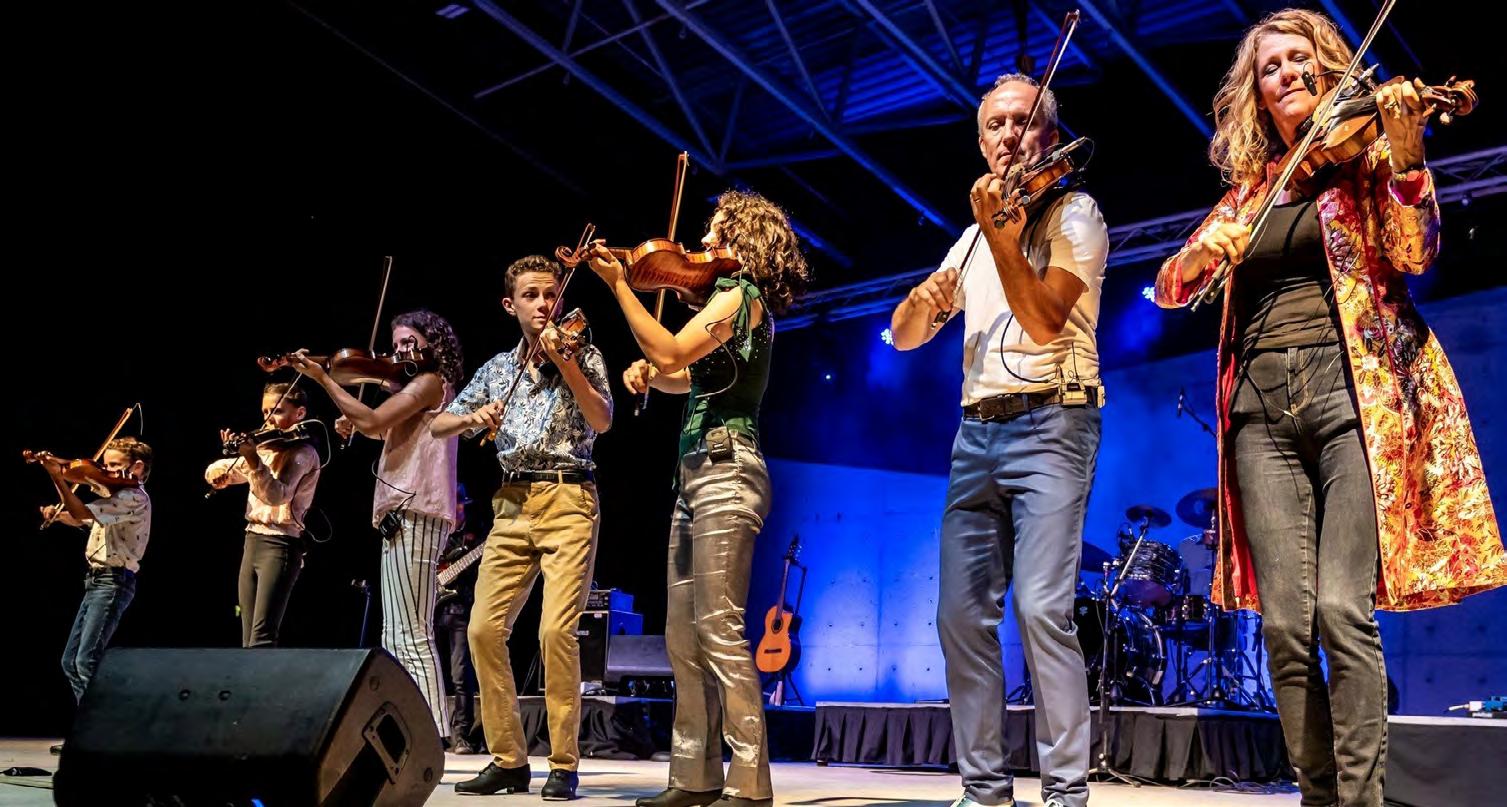
24

While still in the cattle business with two of his brothers, Donnell says they are flexible when it comes to his music. “They are very supportive,” he says. Natalie says she never tires of music. “I love how music still invigorates me. I love that emotion and excitement and how it challenges my mind and growth.” Sharing that with their children is the cherry on top for the talented couple. “Mary Frances (now 18) has finished her first album, First Light, which will be released May 31. It has strong Latin and jazz influences. We are very proud of her.”
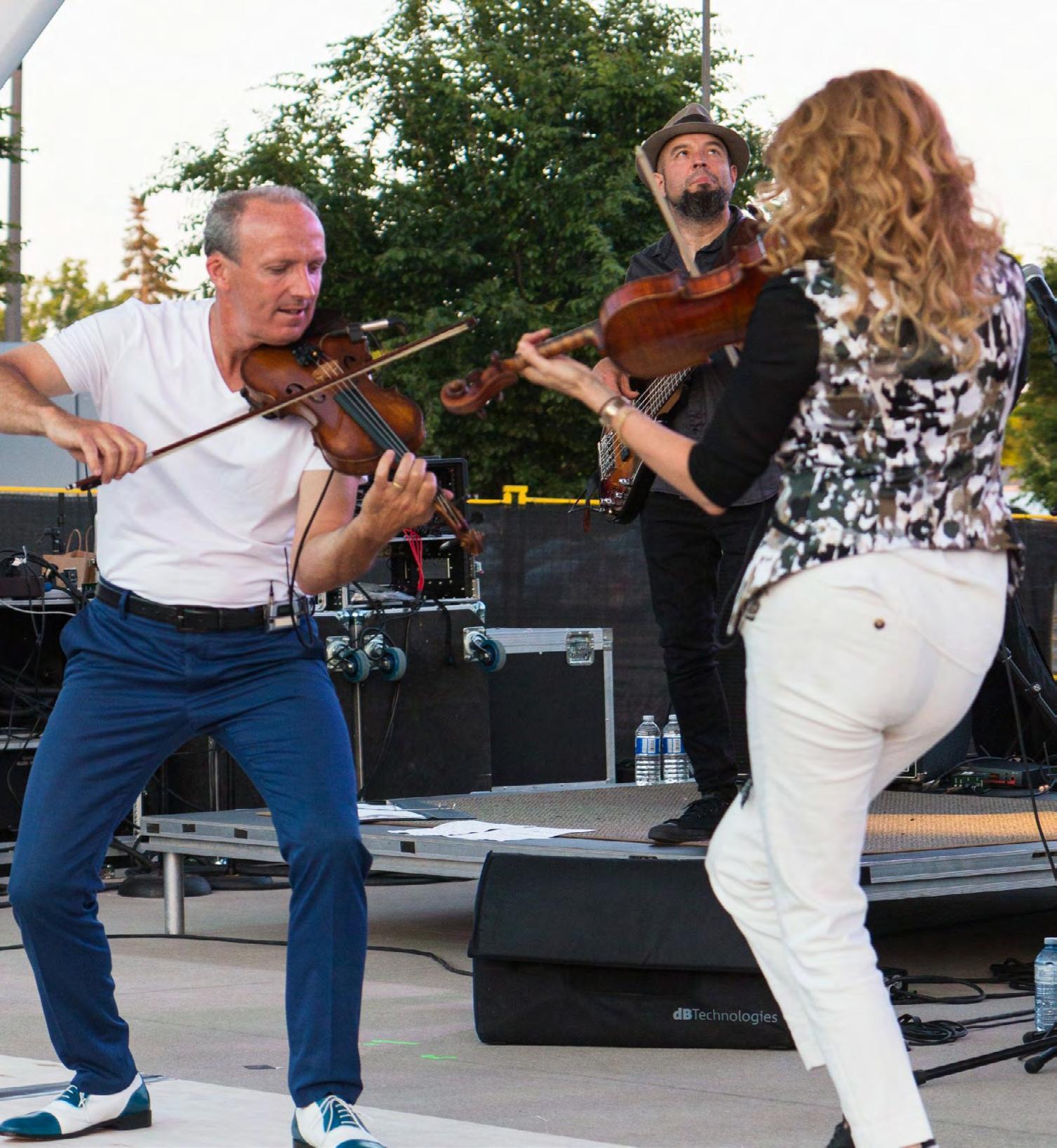
25

Connecting Humanity Through Music: Playing For Change
by Kara Martinez Bachman
One day, music engineer Mark Johnson was in the subway system in New York City when he chanced upon a musical performance of several monks. They were in robes, “all painted in white,” drawing a big crowd. Everybody was enthralled.
“I had an epiphany,” Johnson said. “I saw a homeless man next to a businessman, next to a little girl.”
The realization came instantly that he’d experienced something special, a pivotal moment. The realization was: “I’ll never be able to record whatever that just was…in a studio.”
Johnson had spent years at NYC’s Hit Factory studio, known for recording the biggest icons of the biz. He’d had the joy of engineering music for everyone from hip hop artists to Paul Simon, but suddenly saw an opportunity to use his skill set to bring things to an even more meaningful level.

“When you record music, you’re there for people’s happiest moments of their lives,” he explained. Johnson soon asked himself: “Why not bring the studio to the people in the streets?”
That was the very beginning of the Playing For Change project. In 2002, Johnson began to travel widely, peeking into the nooks and crannies of raw, authentic roots music scenes abroad. Along with Playing For Change co-founder Whitney Kroenke Silverstein, they
26

recorded musicians of all types and varied cultures, from Israel to Pakistan to Angola. Soon, a documentary film followed, chronicling the artistic lives of these street musicians worldwide. During it all, Johnson realized music creates the perfect introduction for entering the worlds of struggling people.
“The music brought the trust,” he explained, adding, “None of this means anything if we don’t give back to the future.”
After getting to know musicians via the sonic experience, he’d ask more concrete questions about what was lacking in their local communities. Soon, the work also took shape as a nonprofit, the Playing For Change Foundation, managed by Kroenke Silverstein. One of its first charitable projects was building a school in South Africa. Johnson described how he and the locals saw the need for a school focused on music, art, and dance.
“Maybe instead of the next child being a gangster,” he said, “maybe they’ll be the next Nelson Mandela…because someone believed in them.”
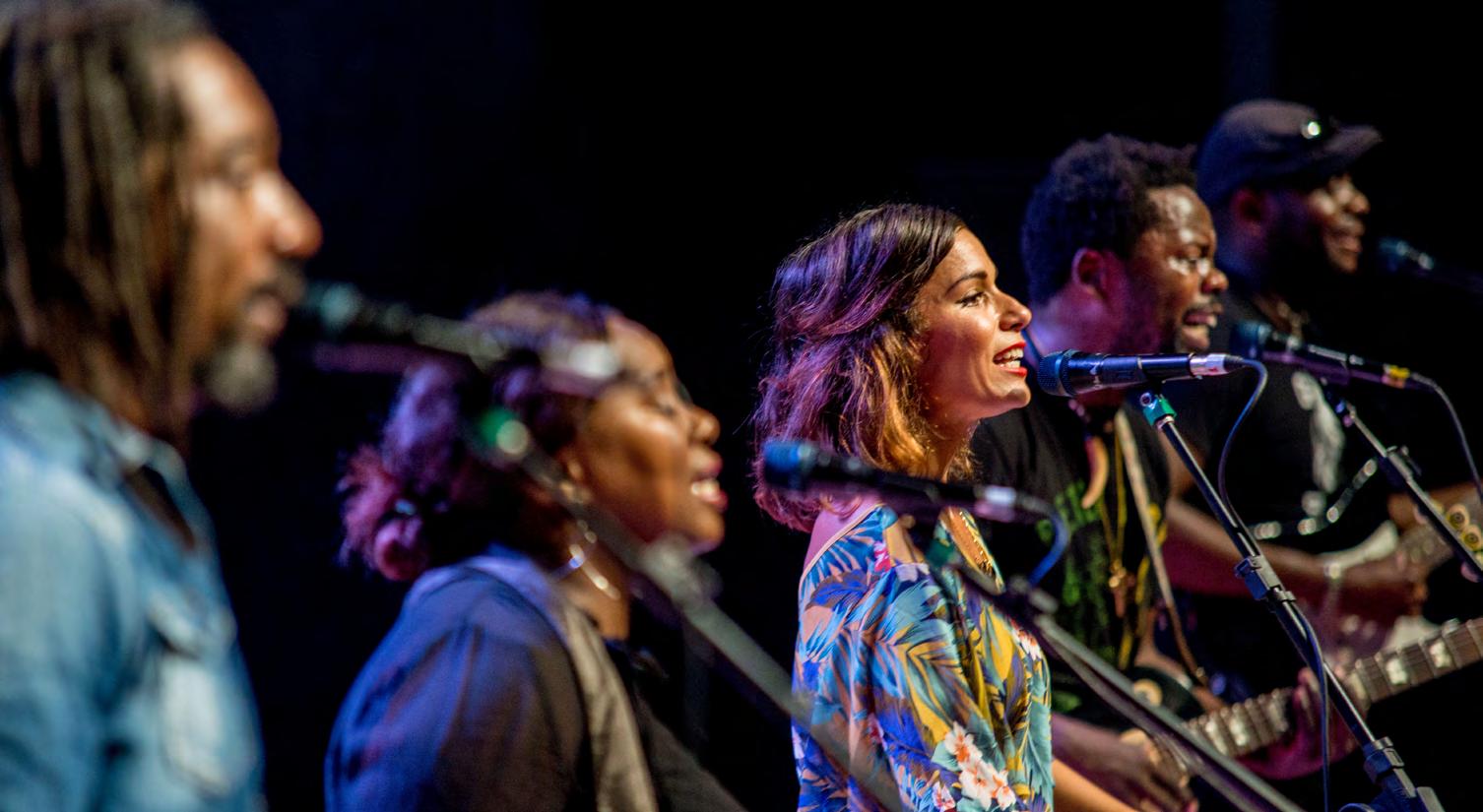
In addition to other charitable projects, the Playing For Change Foundation has built 27 schools. One place that has received a lot of attention is Nepal, where the foundation has built three schools and given support to initiatives such as the Mother Society. Johnson explained its vitally important goal: “Women travel on foot through the Himalayan Mountains to teach their daughters about sex trafficking and false marriages.” The society has delivered education, built neighborhood watch groups, and provided other resources to Nepali women.
Johnson sees music as critical to the process and part and parcel of dealing with struggle.
27

“We humans invented music to help us get through conflict resolution and make deeper connections,” he explained.
About 15 years ago, he had yet another good idea, intended to connect people from far reaches of the globe; it’s all about genre-crossing and diverse collaboration to the max.
“Why don’t we bring these musicians who have never met and put them together on the same stage?” he asked. In a sense, the goal was to “reinvent” world music. Even while speaking in different tongues, the performers found a way to speak the “universal language.” They’d blend ideas and learn from each other’s “musical styles, tastes, and inspirations.” Johnson didn’t want world music to represent one culture, one faraway corner of the world – he wanted it to represent MANY world corners in one band simultaneously.
28

The Playing For Change Band has been touring for 15 years, and Johnson said he has personally been to over 75 countries with the band, all while recording musicians. Right now, the band consists of 10 musicians from 10 different countries coming together onstage.
An example of an upcoming Playing For Change project is recording a new version of Bob Marley’s iconic hit, “No Woman, No Cry.” It features various collaborators and a video that’s being finalized for a mid-summer release. Fans of American roots who want to explore the ties between mountain music and African instruments (the precursor of the banjo was from Africa) would enjoy the 2020 Playing For Change video for the Stevie Wonder song “Higher Ground.” It features banjo virtuoso Bela Fleck, percussionist Sheila E., and a lengthy roster of contributors from around the globe, including musicians from Senegal, Mali, Brazil and more.
“People don’t have to believe that they have such a divided world,” Johnson explained, adding that Playing For Change is about “connecting people to the humanity we all share.” He summarized, “People think the world is so full of fear when it’s really so full of love.”
29

30
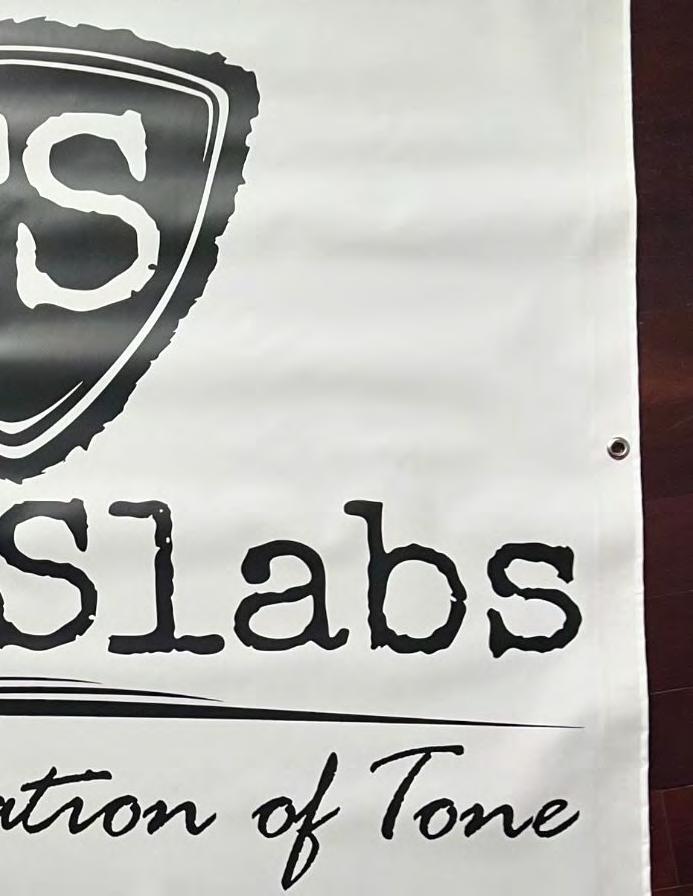 by Susan Marquez
by Susan Marquez
31
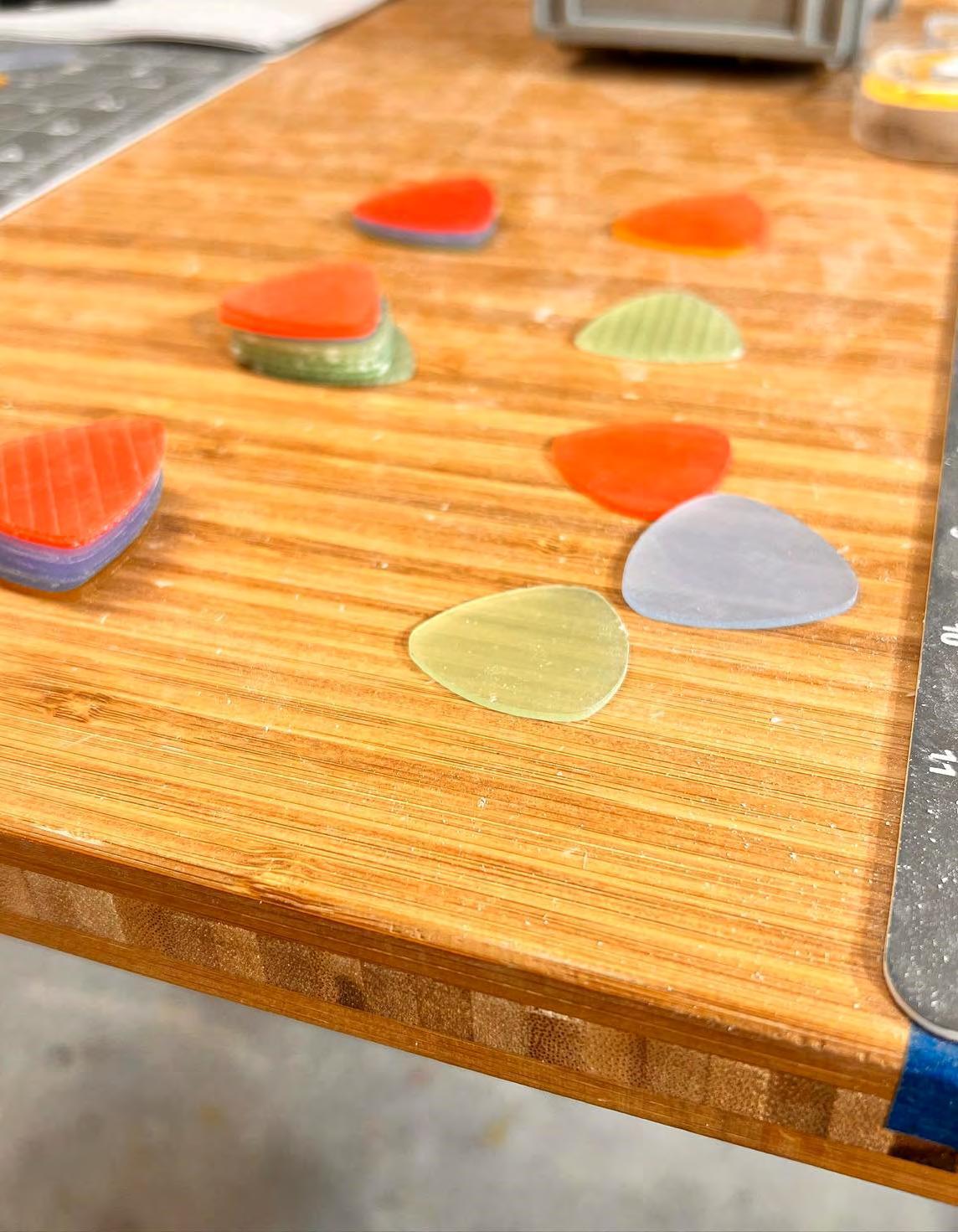
32
Guitar picks, also known as plectrums, have been around for about as long as stringed instruments have been played. Musicians use the thin triangle-shaped tool to strum or pick the guitar strings to get the best possible tone from their instruments. There is a real science to designing and making a good guitar pick. The thickness, the shape, and the material all influence the sounds made when the pick is used.
While the quest for the ultimate tone is nothing new, partners at ToneSlabs are pushing the plectrum envelope with a signature material and beveling process that sets them apart from other pick makers.
Company co-founders David Welch and Frank Solivan were destined to meet. They have spent decades performing, searching, tinkering, and experimenting to find a pick that will produce the perfect tone. “David and I were pitting against each other for pick material on eBay,” says Frank. “We saw each other on Instagram and decided to not only share our pick-making secrets, but we decided to start a company.” Ultimately, that time and effort led them to design and refine plectrums for optimum tone. “Our company motto is ‘We’re here for the tone.’”
The timing couldn’t have been better. When Covid hit, gigs dried up. Frank, a multiGrammy® nominated artist, had been touring extensively, but when the pandemic changed the world for a while, the performances stopped, as did sponsorships. “With our focus on the artists, we wanted to be the first company to help build revenue streams for them,” David says. That resulted in the development of signature lines for several artists. “We didn’t want to be like the companies that left us in a lurch.”
David stresses that he and Frank take the power of “tonal essence” and all that it represents very seriously. “Our attention to detail, along with using the finest materials and our proprietary compound bevels, make ToneSlabs the premier pick in the plectrum landscape.” He explains that picks have been made from Hawksbill sea turtle shells for the last hundred years. While top musicians preferred the tonal quality of tortoiseshell picks, they are no longer manufactured as the species is now endangered.
“It’s fun to try different materials to see what sounds good and lasts the longest,” says David. “We have found a material that provides just the right hardness, rigidity, and density that we craft our ToneSlabs picks with using bevel techniques that we believe exceed the tonal quality of tortoiseshell.”
The picks are individually manufactured in the ToneSlabs shop in Florida. “I’ve been making picks since I was young,” says Frank. “I tried a lot of natural materials and plastics before we hit on this material.” Frank and David are hands-on, making each pick. Frank says he learned the skills he needed to make the picks while growing up, working construction jobs. “And I’ve also done all kinds of carpentry,” says David. Their skills in making picks combined with their years of experience as professional musicians is a winning combination.
They worked together to refine their product before launching the company, “We sent out a bunch to our picker friends to get their feedback, and they loved them,” says Frank. “We have had steady growth month after month since hitting the ‘go’ button on the website.” He explains that there are different ways to develop a business like this. “Things started to come into focus, and we were able to determine what was viable and what was not. By our
33
second month, we were profitable. We believe we have hit on the right business model.”
The ToneSlabs pics started at $45, and the goal from the beginning was to try to bring the price down without sacrificing quality. “We did a Black Friday sale last year that we extended through Christmas, then to the first of the year,” says David. “We offered picks at $35, and we’ve kept the price there. We even offered refunds to people who paid full price earlier. We always strive to be friendly and amenable to our customers. We just want to get our picks into the hands of as many people as possible.”
The picks are sold in the “boutique market” in smaller shops in select locations and via the company’s website. Perhaps world domination is next. “We want to get our picks into everyone’s hands,” says David.
Frank says they are just getting started. “We are still experimenting with different materials, always searching for that perfect tone. The slab is the connection between the musician and the instrument. It is the key to volume, clarity, and note separation, which is what every discerning musician strives for.”
There are plenty of testimonials from satisfied customers on the company’s website, including one from Mason Via, who plays with Old Crow Medicine Show. “I’ve never skydived before, I’ve never run in the running of the bulls, I’ve never wrestled with a swamp gator, and I’ve never storm chased a tornado, but I can only imagine that those thrills must pale in comparison to the rush I get while playing with a ToneSlabs pick.”
As the ToneSlabs website says, this ain’t your grandfather’s equipment company.

34

35
Folk, Bluegrass and Jazz Meld When Folkfaces Jams
by Kara Martinez Bachman
For Buffalo, New York-based Americana band Folkfaces, several roots genres coexist, bringing a rounded variety to the music. This mix is colorfully described by a phrase that aptly encapsulates the band’s myriad influences. They say they’re influenced by “weird old American music.”
“All that funky, folky, bluesy, jazzy, droney, weird stuff just does something to ya!” explained Folkfaces frontman and multi-instrumentalist Tyler Westcott. “Blues and jazz are at the root of many styles of music. Jug bands, string bands and street performers back then were way ahead of their time. They laid the groundwork for rock ‘n’ roll, punk, hip-hop, country, and so much more. I try to use old chord progressions or melodies and put my own words to ‘em. Or take an old song and make it your own. That’s how new music gets made!”

The enthusiasm is evident when Westcott describes why this music has reached in and grabbed his heart. He sounds like a good steward of all sounds indigenous to the U.S. One of his most powerful influences is clearly jazz.
“When I was a senior in high school, I went to New Orleans, and danced on a riverboat, ate catfish, and heard an amazing jazz band,” he reminisced. And that really changed me.”
36
He continued, “I’ve also had many formative experiences jamming with family and friends and growing up at music festivals like Grassroots and the Great Blue Heron. Playing music and spreading joy…making people feel…is the best job in the world.”
While Westcott also makes solo music—such as his April release of the record “Royal Street Blues,” the full band Folkfaces has made several records since its founding in 2011.
Their latest – titled PLUMS – was released a year ago in June 2023.
“It’s our third full-length release,” Westcott explained. “We recorded it at GCR Audio in Buffalo, New York with Justin Rose. The album features many special guests. We took our time and worked very hard to make it sound great.”
The title is an act of simplicity; he said it references the band’s “snack of choice” on the first tour with the current lineup. That current roster includes Westcott, fiddler/multiinstrumentalist Brendan Gosson, upright bass player Patrick Jackson, and percussionist Dan Schwach on drums and washboard.
For years, Folkfaces has hosted its own camping music festival. Their 8th annual Folkfaces Fest will be held from October 3 to 6 at Cherry Hill Campground near Darien Lake outside Buffalo.
Additional events they’re excited about include The Family Hoedown 7 at the “G” Lodge in Hannibal, NY, on June 7; the Estival Festival in Caneadea, NY, on June 21; and “Folkfaces & Friends” at the Great Blue Heron Music Festival in Sherman, NY on July 5 (for more dates, visit the band’s website at Folkfacesmusic.com or follow the band’s Facebook page).
Westcott said what they’re after is “believability” – and taking just a peek at a Folkfaces performance will make anyone into a true believer.
For those new to the Folkfaces sound, “Come see a show. Listen to our records. Meet the band,” Westcott suggested. The strong personality emitted by these genuine folk faces can be sensed in Westcott’s joke; it just might not be a joke but an actual suggestion: “Take us to your house,” he said. “Let us drink your beer and sleep on your couches! You won’t regret it…hopefully!”

37

Holler Choir
by Kara Martinez Bachman
38

39

40

For singer, songwriter, and guitarist Clint Roberts, music isn’t about fitting into a small, well-defined box; it’s about forcing that box to grow bigger and making its borders more permeable.
“I aspire to make records with reverence to what I borrow from,” he explained, “but not too concerned with staying in my lane.”
Roberts is doing just that with his current project, a blend of old-time, bluegrass and “extra” folk sounds; it fits well with the Americana vibe. Called Holler Choir, the project comprises Roberts at the center, with a rotating roster of accompanying artists orbiting in and out around him.
“There’s clearly an old-time and bluegrass influence to what we’re doing, but through a contemporary lens,” Roberts explained. “I have a deep and tremendous respect for everyone doing the traditional thing, but as a young Appalachian growing up in Asheville (North Carolina), the most sincere thing is combining the past and present.”
He said it’s all “more introspective than what you’ll typically find in bluegrass,” adding that his songwriting is very “personal” to his life experiences. There’s also “a big Texas influence” on the songwriting side of things.
“Lyle Lovett is a big influence on me,” he said while citing additional inspiration from Austin-area singer-songwriter David Ramirez.
The first Holler Choir full-length album was Songs Before They Write Themselves, released in January. Roberts described it as “a bit of a cultural kaleidoscope.”
“We did not want to be pigeon-holed,” he said.
41
The record starts fairly traditional and progresses away from that with each track. For instance, there’s no drum on the beginning tracks…, but then they show up. On even later tracks of the record, Roberts said he incorporated unconventional things such as an organ and “distorted pedal steel, to make it sound like lap steel.”
He said during live shows, this “kaleidoscope” approach comes even more into play.
“There’s some Latin grooves we mess with; some New Orleans sounds we mess with…to keep audiences engaged.”
Holler Choir first emerged during the recording of Roberts’ EP Mountain Air. Although it was a solo release, his work with various artists “lit the fuse” for what would soon become Holler Choir. The album following would be a full-fledged Holler Choir release.
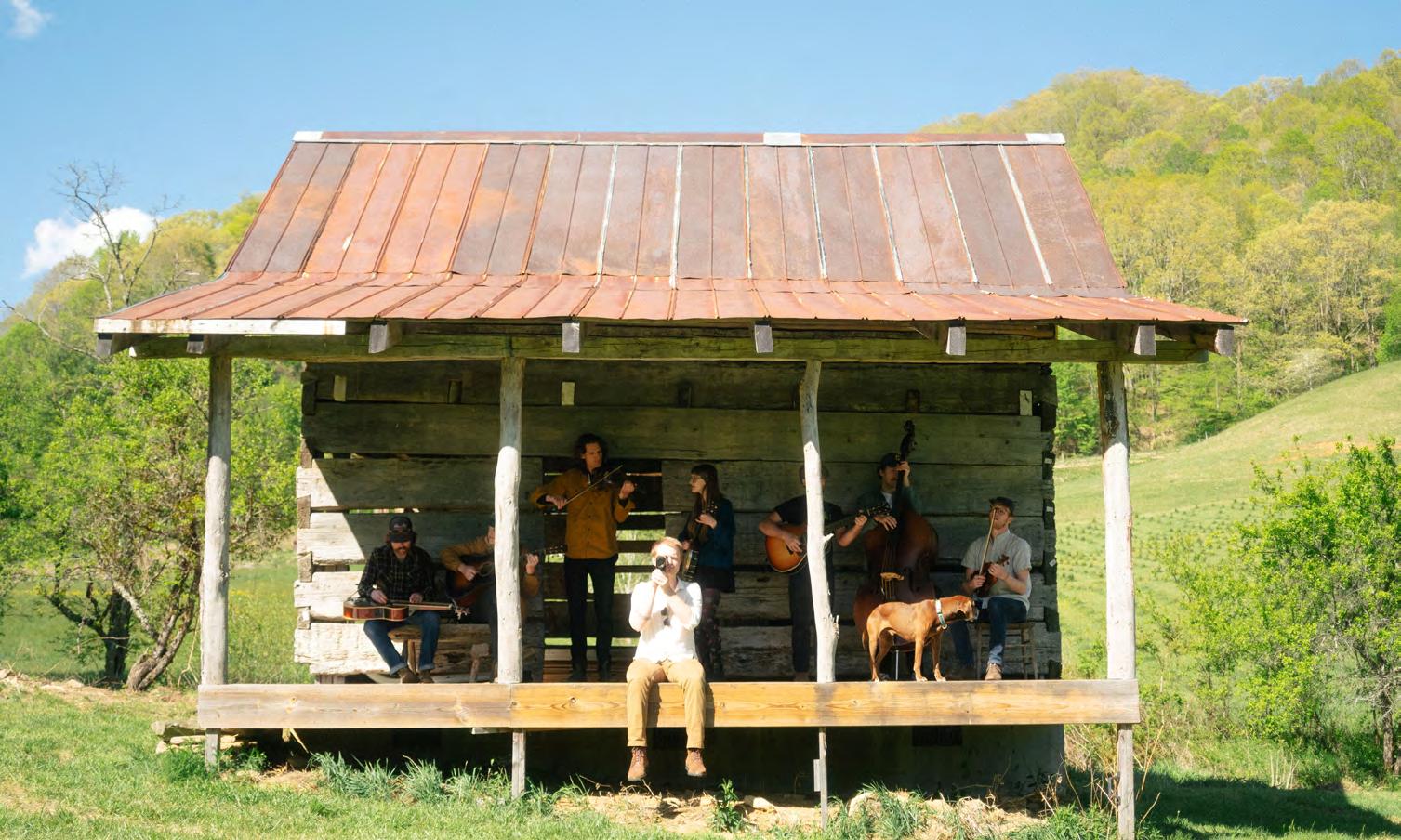
“We booked a session at Echo Mountain,” Roberts said, “The most famous studio that Asheville offers.”
Used by some big acts–including The Avett Brothers–the historic studio’s “church room” was where “Songs Before They Write Themselves” was tracked. Michael Ashworth (of the Steep Canyon Rangers) produced it, and Jason Richmond, who worked on records by The Avett Brothers, Clem Snide, and more, engineered it. Grammy-winner Kim Rosen mastered it.
“We’re proud of it,” Roberts said. “Everybody who plays on it is a peer of mine in
42
Asheville.”
He likes to think of the Holler Choir project as similar to a “circus,” wherein “the acts within the circus are kind of rotating.”
When performing, he appears with different musicians from the Holler Choir roster–sometimes certain people are available to do a show, sometimes others. Roberts said each show has a different format, but all are “largely emulating the record.”
“We hope to make it a consistent cast of characters in the long term,” he added.
He said that, within the limitations of working with a changing roster of performers, there’s one huge bonus that is not available to those who gig together constantly. There’s no way for things to get stagnant, and according to Roberts, it allows for “a lot of creativity.”
It’s important for Roberts to work with quality singers. He said the drummer, bass player, and banjo player in Holler Choir are all great singers and could hold their own as leads. He said he and his bandmates “enjoy the challenge of every leg of the tour being different.”
Among Holler Choir’s upcoming dates are an appearance during the first week of August at Asheville’s AVL Fest and a gig in Greensboro at the NC Folk Fest, happening September 6 through 8. For more information and updates, visit Hollerchoir.com or follow the band’s Facebook page at Facebook.com/Hollerchoirmusic.
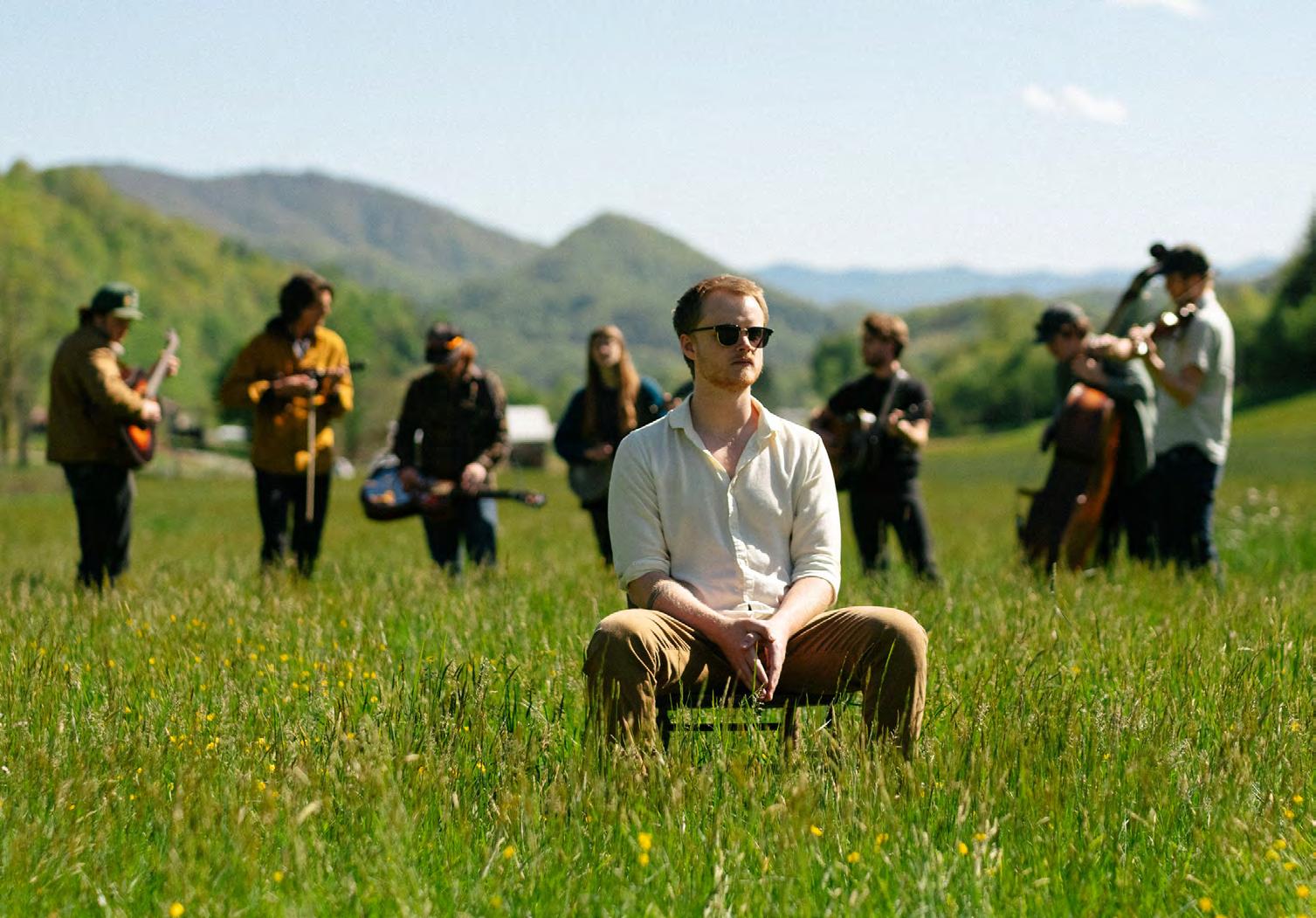
43
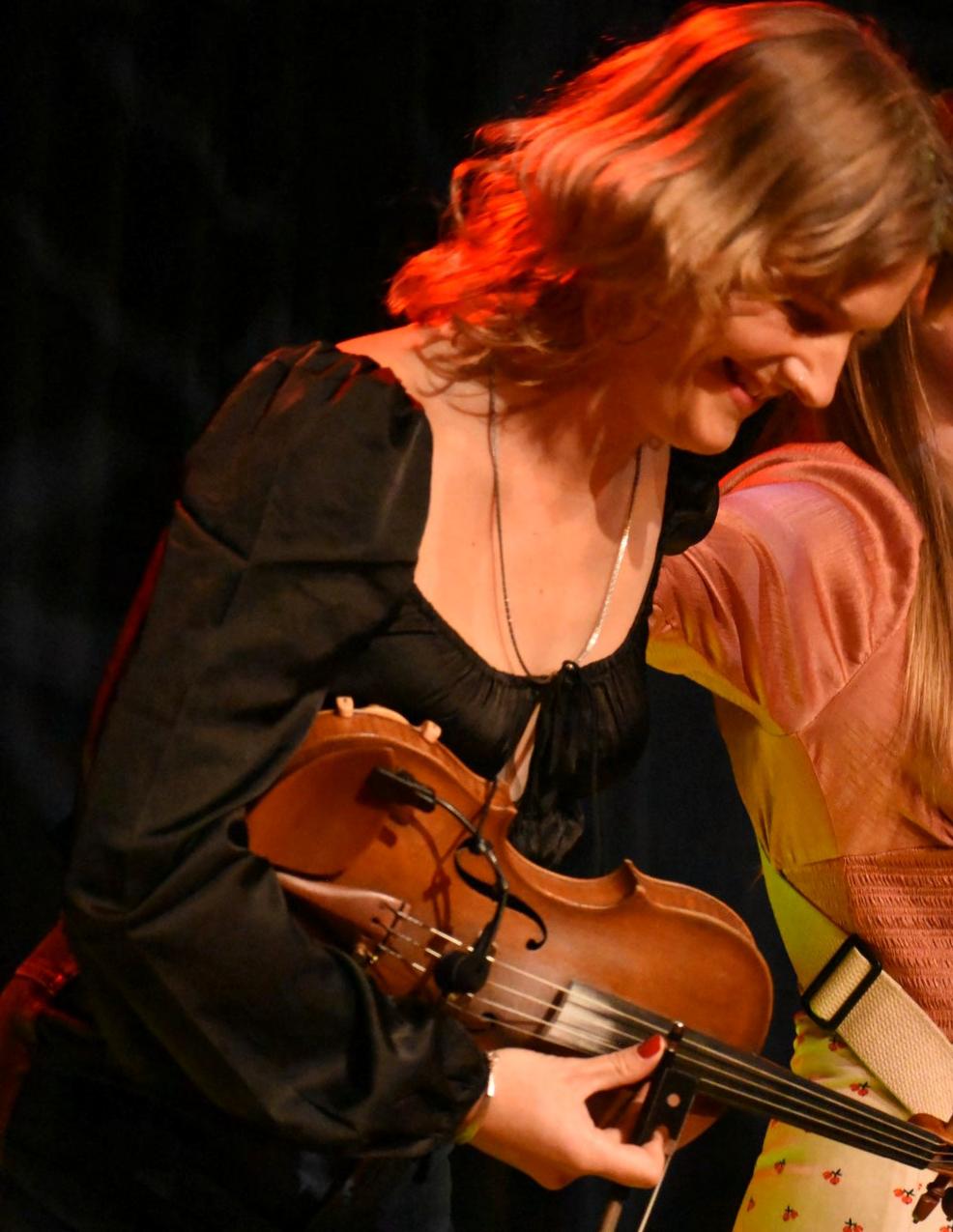
44
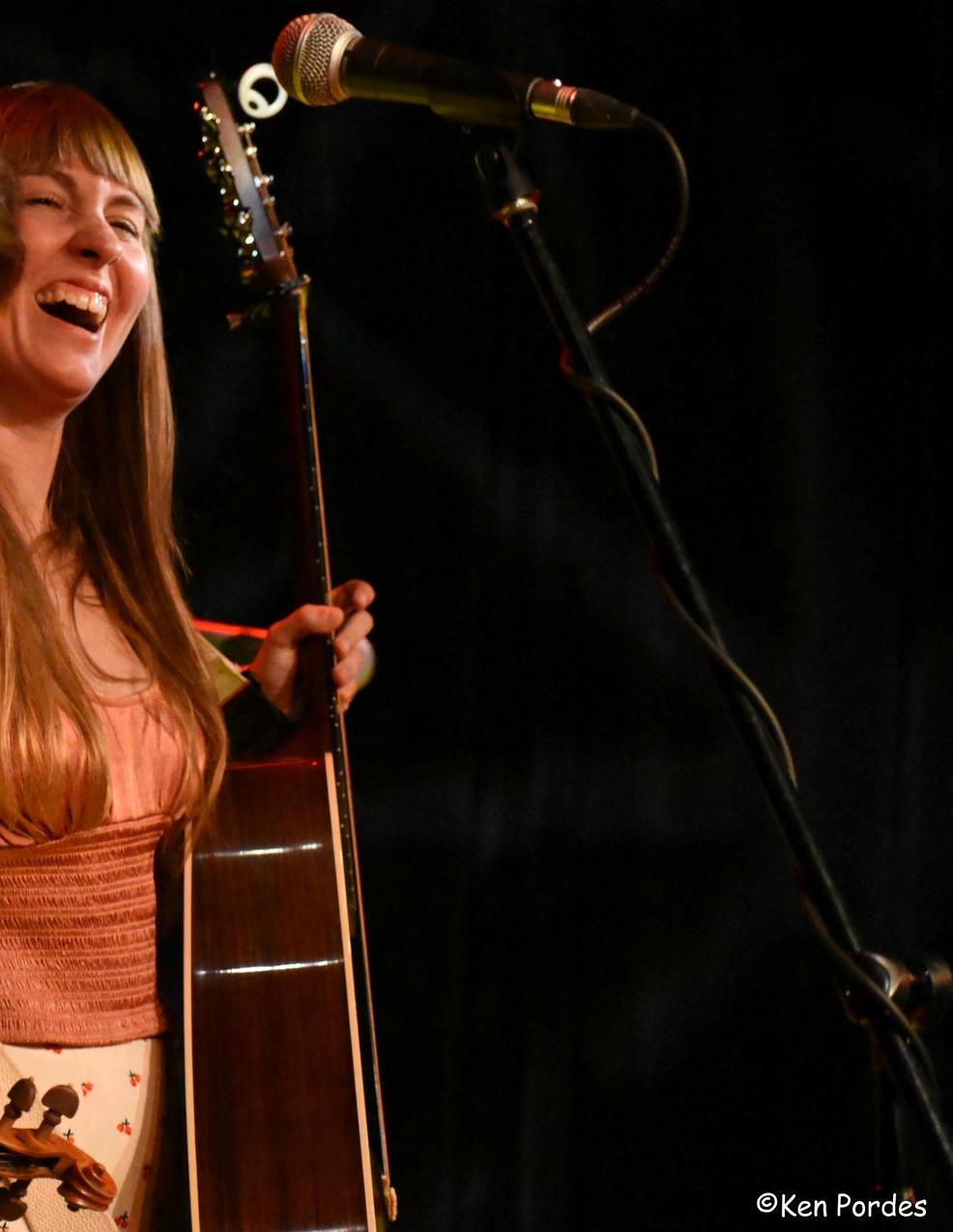
California Harmony and Grit: Two Runner
by Kara Martinez Bachman
Based in California, roots duo Two Runner creates music that pays homage to different traditions. Self-described as an amalgam of “Americana-folk-roots-old time-bluegrass,” Two Runner delivers contrast: There’s angelic harmony but also an authentic sense of grit.
Before coming together, Paige Anderson and Emilie Rose lived only a stone’s throw from each other. Somehow, they had never met and could never have guessed their paths would eventually cross with a joyful and unexpected result. There, in Nevada City, California–the small town of 3,000 where both grew up–harmony and creativity were lying in wait. Their near-proximity partnership was separated only by a few property lines in between. The two performers finally met and bridged that gap, discovering their musical compatibility in 2020.
“I lovingly call it a ‘Covid relationship,’” Rose explained. “We both grew up there, and it turns out we were two houses away from each other.”
When free movement, travel and gatherings were restricted during COVID-19, the two
45
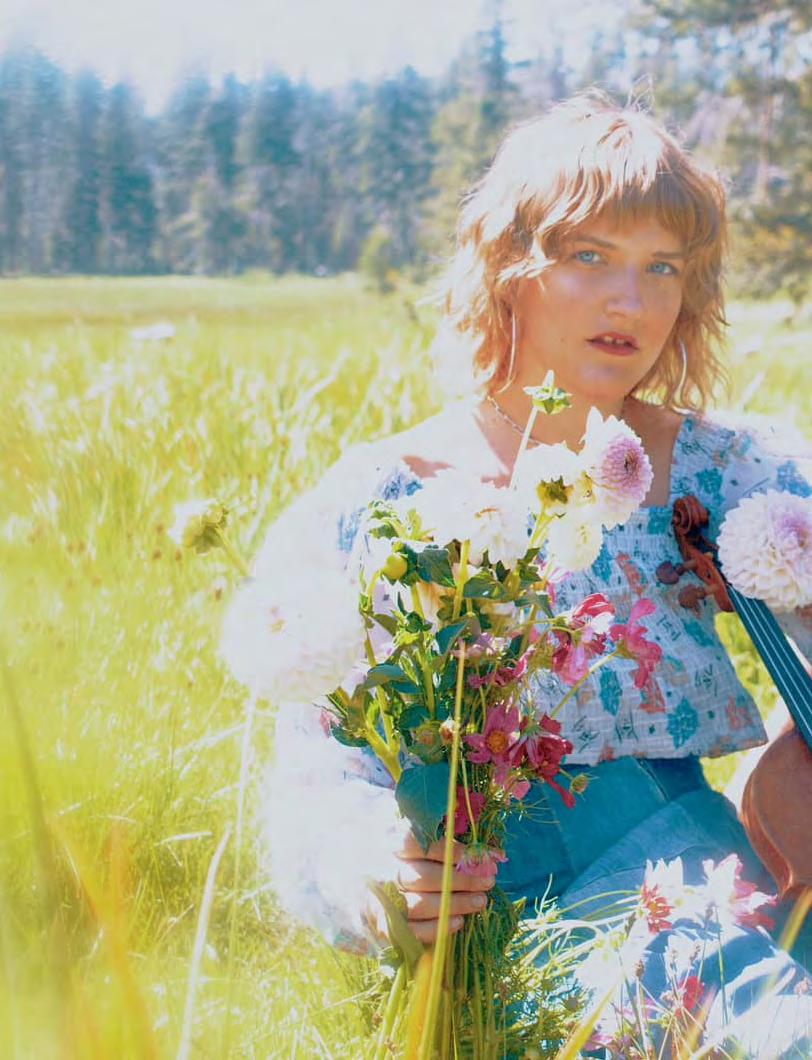
musicians jammed together from within their neighborhood “bubble.” It was a time of creativity.
Once the restrictions were lifted, they were clearly accepted with open arms: Two Runner played over 100 dates last year.
A multi-instrumentalist and songwriter, Anderson got her start in the business as a child; she traveled for over a decade with her family band, Anderson Family Bluegrass/The Fearless Kin. Rose, a Berklee College-trained fiddler, performed for a decade with Celtic outfit The String Sisters.
Both musicians believe the place where they come from has influenced the sound of Two Runner. It’s not just what is found within the walls of these two neighbors’ homes that shape the sound; it’s what’s found–both tangible and intangible–in all their surroundings.
“I really do believe the landscape around me and our hometown, that really does translate in the music,” Anderson said. She called their region of the Sierra Madre “a very inspiring place.”
Rose seconded that thought, emphasizing that people who play these genres share a commonality, regardless of which state they call home.
“Mountain music is mountain music,” Rose said. “It does not matter where it comes from.”
Two Runner’s debut came with the 2023 album release, “Modern Cowboy.”
“The songs naturally formed,” Anderson explained, of the duo’s first full album. “We
46
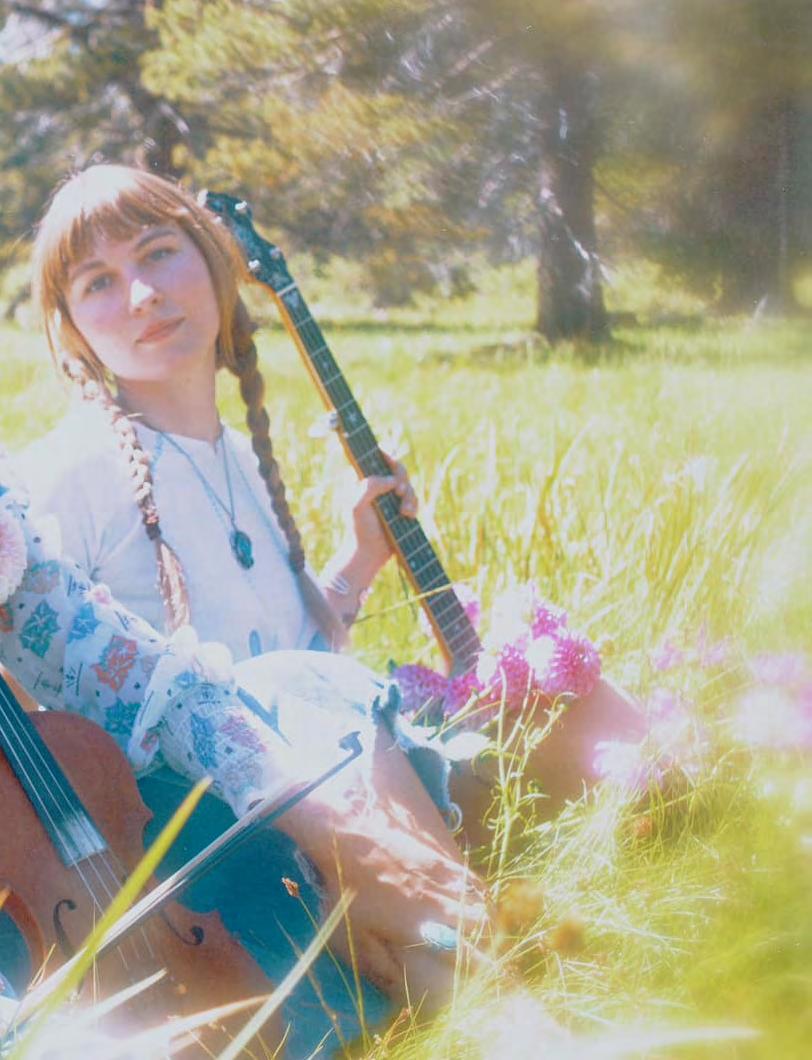
recorded it at Dark Horse Studios in Franklin, Tennessee…a really beautiful spot.” That beauty could explain why big names such as Bela Fleck, Taylor Swift, Keith Urban, and a huge roster of other A-list artists have also recorded music there.
“Paige [Anderson] was the primary songwriter,” Rose said, “and when we started playing together, she already had all these wonderful songs. We put it out ourselves, we produced
47

48

the entire album, and I think it’s been well-received.”
With so much creative flow happening, new music is already in the works. When they spoke with The Bluegrass Standard, they were already preparing for the June drop of a new two-track EP to be released on the Gar Hole Records label.
The duo both have a hand in the songs; it isn’t 100 percent Anderson.
“I pretty much have the songs finished lyrically and melodically,” Anderson explained, adding that Rose then gives her thoughts and influence as each number approaches its final form.
“It’s such a beautiful process,” Anderson added.
Both halves of Two Runner said they are excited about upcoming dates, such as their appearance at the Farewell Music Festival in Redmond, Oregon (July 19 through 21), where they’ll share the main stage with major acts such as Billy Strings and Brandi Carlile; Colorado’s RockyGrass Festival (July 26 through 28); and the Pickathon Experiential Music Festival in Portland, Oregon (August 1 through 4).
49
The Waddington Brothers

50
Brothers
by Susan Marquez

51

The Waddington Brothers’ credo is “Finding inspiration in every tune.” Based in North Dakota, the family band consists of Seth Waddington on guitar, his twin brothers, Jacob and Ethan, on mandolin and banjo, respectively, and their youngest brother, Job, on bass.
The boys come by their musical abilities naturally. Long before their current band was formed, they spent the early years of their life in a band with their parents. “Our dad was the band leader, singing and playing guitar. We played together as a family from 2004 to 2011,” says Ethan. Seth, Jacob, and Ethan were joined by two of their sisters, touring the United States and Canada and performing country Gospel music. During their shows, Ethan, Jacob, and their sister, Amanda, played bluegrass music while their parents took a break. When the twins were twelve, they played in their first bluegrass festival, “Frozen Fingers,” in Minot, North Dakota. During that time, Job and Olivia were born, the two youngest Waddington children.
After a few years of performing, the kids participated in the Youth in Bluegrass program
52

at Silver Dollar City in Branson, Missouri. They were also getting noticed elsewhere, especially when Ethan won the second-place prize in the national banjo competition in Winfield, Kansas, in 2009.
Growing up, the family lived a life of ranching and performing. “My dad worked on ranches in Montana, Washington, and Oregon,” says Ethan. “All of us except Job were born in Washington State,” Ethan explains. His dad would leave on weekends to tour with the family, and he began to worry that the other ranchers would feel he wasn’t pulling his weight. “He decided to start a tree service as a means of self-employment, giving him the freedom to travel when he wanted to.”
But when the band stopped, the music was over. “We didn’t play music for eight or nine years,” Ethan says. “It was almost more painful to play music than not. We missed it.” Ethan and Jacob moved to Montana, where they spent the next six or seven years building log homes. Seth married and had four children, staying in North Dakota to work for his
53

dad’s tree service. Young Job also works for the tree service.
While they didn’t grow up in a bluegrass culture, the boys listened to The Darlings on the Andy Griffith Show. Seth says he later learned that real musicians in the band, The Dillards, played the Darling characters. “We all grew up watching the old shows,” says Seth. “We loved to watch Westerns, probably because our dad worked on ranches in the West. We watched Roy Rogers and Gene Autrey, and we listened to the Sons of the Pioneers every night. I could hardly get to sleep without listening to the Cool Water album. My dad even took it with us on vacation.”
The boys felt music pulling at their hearts, and one night, Ethan, Jacob, and Seth discussed the idea of starting a new band. They were so serious about it that Ethan and Jacob quit their jobs in Montana and moved home to start the band. The three-piece band needed a bass player, and their first pick was Job. “He had just turned 15,” says Ethan. “Seth told him to think about it because we were going to be hard on him. Job thought about it and came back, telling us he was in.” Ethan says having Job in the band has been great for all the brothers. “We have all bonded through the process.”
They formed The Waddington Brothers in 2020. “It was during the Covid pandemic, but that wasn’t too much of a setback for us, as we were just getting started,” explains Seth. “We spent a lot of time working on material.”
Whatever they have been doing was working. They met Greg Cahill with Special Consensus at a festival, who encouraged them to go to the SPBGMA convention in Nashville. “It was a two-day drive for us, but when we realized there was a competition where we could play on the big stage, we decided to do it.” That gamble paid off for the band. They won first place in the international band championship at the 2023 SPBGMA awards ceremony.
“We were so surprised,” says Seth. “We were just excited to go to the awards show. We can’t wait to go back to Nashville again soon.”
While they were raised on Gospel and enjoyed big band swing and other forms of music, they settled into bluegrass. “We got to know the Kruger Brothers when we were younger, and they have greatly inspired us,” Ethan says. “They taught us a lot and changed the way we view music. They taught us what makes music speak to people.”
Ethan says that they still connect to Western music. In addition to bluegrass, they play a few Western tunes, a throwback to watching Westerns while growing up. “There’s something romantic about the American West,” Ethan says. “We like to sing songs about tumbling tumbleweeds and such. I think that’s responsible for our sound as a band. We tend to have vocals that sound more like Western singers than Appalachian vocals.” Seth says they learned to play Western music for fun because they loved it. “When we play it in shows, people of all ages seem to connect to it.”
Now, the boys hope to record soon and are looking into studio options. “We are even working on a few original songs.” Seth says they have access to some “really good” original music. My uncle is a great songwriter, and he has several songs for us to work on. We are also trying to write some of our own songs.”
Seth says they enjoy listening to old music and pulling elements from it. Somehow, The Waddington Brothers retain the old sound while adding a modern twist. The band has a traditional bluegrass sound but with a unique style they have made their own. Their website says their musical style “transcends time, bringing listeners back to a place where music was more than just entertainment, but rather a way of life.”
While the band is based in North Dakota, it is booking festivals nationwide—and bookings are picking up. “We have more shows booked this year than we have in the past,” Seth says. This summer, we are playing in Minnesota, Kentucky, and Arkansas so far. We’ll also be back in Silver Dollar City in May. We’ll go just about anywhere.”
The Waddington Brothers are serious about their music; we think they are a band to keep in your sights. Check out their music on their website: https://www.waddingtonbrothers. com/videos.
55

Becky Buller
by Susan Marquez
It’s not uncommon for people to suffer from depression or anxiety at one time or another in their lives. But the Covid pandemic shutdown affected some people much more severely than others.
Becky Buller says she was one of those people whose mental health suffered during the pandemic. “As my mama used to say, I was lower than a snake belly in a wagon rut.”
The Minnesota native has been at the top of the bluegrass world, with enough awards to fill a large room. But she felt stuck. “My anxiety and depression manifested itself in different ways during the pandemic. I had a new record, and I couldn’t promote it. One day, I was signing CDs to send to radio stations, and I could hardly write my name. I was in such a bad place.”
Yet, in October 2020, she won the IBMA Collaborative Recording of the Year for “The Barber’s Fiddle” and the 2020 IBMA Song of the Year for co-writing and fiddling on Special Consensus’s “Chicago Barn Dance.”
Her turnaround came when she was commissioned by the Fresh Grass Foundation to compose a piece for their 2023 festival in Bentonville, Arkansas. “I had a song, ‘Jubilee,’ that I started writing early in 2020 in collaboration with Aoife O’Donovan. The song was about wistful longing for mental and emotional rest.” The song laid dormant until the Fresh Grass Foundation contacted Becky. “That song was the seed that blossomed into an entire song cycle,” she says.
“I am more of a songwriter than I am a tunesmith, and I liked the idea of a song cycle, although I had never written one. I listened to a couple of artists’ song cycles, including Paul Simon’s Seven Psalms.” The result of her efforts is her newest album, Jubilee, which chronicles Becky’s lifelong struggle with acute depression and anxiety. The Jubilee is a biblical term for a year of rest, restoration, and liberation, which describes what she had to go through to pull herself out of the depths of her suffering mental health.
When Becky asked the folks at the Fresh Grass Foundation if she could record the piece, they not only said yes, but they offered her use of their Studio 9, in North Adams, Massachusetts, which is part of the Massachusetts Museum of Contemporary Art. The Fresh Grass Foundation operates and manages Studio 9, a state-of-the-art recording studio and venue. “They were so supportive of this project,” says Becky. “They even put us up in a hotel there.”
The album was recorded in two days, September 20 and 21, 2023. Produced by Stephen Mougin and engineered by Dave Sinko, Becky says it was recorded live, with a few vocals overdubbed when they returned to Nashville. The album was mixed by Stephen Mougin

at Dark Horse Recording in Goodlettsville, Tennessee. “I am so grateful to Aoife for lending her pen, brought this music to life. Ned Luberecki (banjo), Daniel Hardin (vocals, bass), Wes Lee (mandolin), album, which was released on May 16 at a release party at the Station Inn in Nashville before her The album is a treat to listen to. After the interlude and “Kismet,” an instrumental, the song “Woman” lyrics about a woman chasing a thread and spinning a web of tune and rhyme, something that heals, and others speak poison. I am a people pleaser by nature, so I’ve had to learn how to respond to some “Alone” was released in early April. “I wrote that song when I was at my lowest,” she says. In “Whale,” as she explains that she is trying to enjoy life, letting go to let God do her thing. “I’m so glad and I know I only have this day to dance, so I’m making the most of this blessed second chance – telling whale.”
It’s easy to hear the tension build in the instrumentals throughout the album. From “Kismet” to “Spiral” a year of Jubilee, shook the ground under my feet,” sings Becky. “I hope this music is as therapeutic pray this music carries you toward a place of peace.”
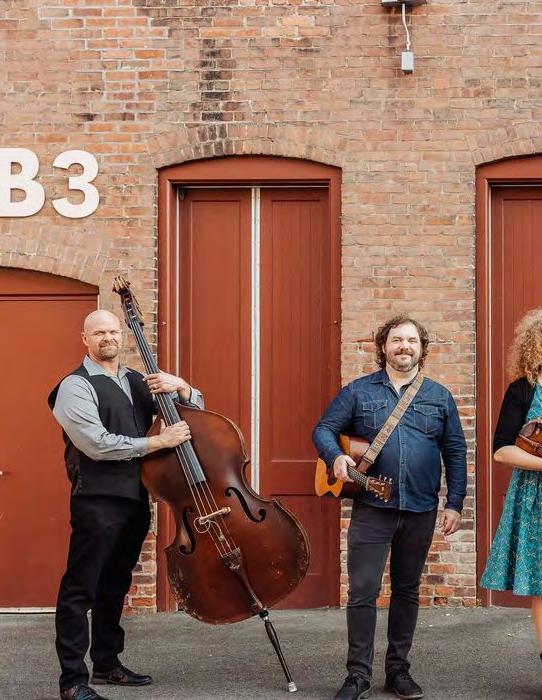
58
pen, her voice, and her spirit to this project. I am equally grateful for my incredible band, as they (mandolin), and Jacob Groopman (vocals, guitar).” Becky plays vocals, fiddle, and cello banjo on the performance there that evening.
“Woman” is autobiographical, with Becky being “the woman behind the words,” as described in the heals, truth to impart. “All of us have so many voices speaking into our lives. Some speak honey, some of those voices.”
“Whale,” like Jonah, Becky sings, “Something real big swallowed me whole.” Her joy is unbridled so grateful to be here and to have a second chance.” The lyrics of “Whale” express that: “Now telling anyone who will listen to my big fish tale about the time I was rescued in the belly of the
“Spiral” to “Descent,” there is a noticeable progression leading to the uplifting Postlude. “It came therapeutic for those listening to it as it was for me to write it. No matter what you’re facing right now, I


59


60

Regional Styles In Appalachia
by Candace Nelson
There is nothing quite like a piping hot slice of pizza topped with a flavorful sauce and dripping in mozzarella cheese. Pizza, arguably the culinary icon of American cuisine, varies widely from country to country and state to stage. While New York and Chicago are often synonymous with pizza styles - giant, flat foldable slices or deep-dish fork and knife meals - the Appalachian region has developed its own distinct pizza culture. From coalfired crusts to inventive toppings that reflect the region’s agricultural bounty, Appalachia offers a pizza experience that is as diverse as its landscape.
OHIO VALLEY
Located along the eastern border of Ohio, encompassing West Virginia’s Northern Panhandle and moving into Pittsburgh, Pennsylvania, a much-beloved style of pizza was created that often draws ire from those not local to the area.
Ohio Valley-style pizza—sometimes called Steubenville style—has a thick, crunchy base topped with tomato sauce and baked. Once the rectangular pizza is removed from the oven, it is topped with provolone cheese and your choice of pepperoni, mushrooms or banana peppers.
This process was made famous by DiCarlo’s Pizza, which has locations throughout the region. The pizza is sold by the square and is at its best when enclosed in the cardboard box for just a minute or two to let the hand-grated cheese gently melt and warm the toppings.
BRIER HILL
In one small neighborhood in Youngstown, Ohio, a unique style of pizza reigns supreme. Brier Hill Pizza, named after the Italian-settled neighborhood, is inspired by the Basilicata region of Italy.
The pizza is a more rustic, home-style recipe that includes bready dough, a heavy helping of thick “Sunday” sauce, bell peppers and Romano cheese in lieu of mozzarella.
Pizzerias throughout Northeastern Ohio began offering this style of pizza in the 1970s, though the tradition likely originated during the Great Depression when families used government-issued flour to make bread and canned their own sauce made from peppers and tomatoes in their gardens.
DAYTON, OHIO
Thin, crispy, salty, and cracker-like are the words best used to describe Dayton, Ohio, style pizza. The cracker crust is dusted on the bottom with cornmeal. It is then topped with a thin layer of tomato sauce. Finally, toppings are piled high and spread to the very edge, leaving no outer crust.
In the same vein as Midwestern-style pizzas, which are square-cut, the Dayton pizza style follows suit. The finished pie is cut into very small, bite-size squares.

61

It is similar in style and often compared to St. Louis-style pizza, which features a thin, cracker-like crust topped with tomato sauce and Provel cheese. It is also cut into squares.
ALTOONA, PENNSYLVANIA
Altoona-style pizza is not a standout for its crust, sauce, or even how it is cut. Instead, it is known for its cheese. While it’s common to see mozzarella or even provolone topping pizzas, the Altoona area takes it a step further.

Altoona-style pizza is a Sicilian-style pizza with a thick crust topped with green bell peppers, salami and American cheese. It likely started as a Velveeta-type pasteurized cheese product and is now more commonly a yellow American cheese.
The Altoona Hotel created the style more than 50 years ago, and it continues to be sold in squares at various other restaurants in the area.
OLD FORGE, PENNSYLVANIA
This Northeast Pennsylvania town claims it is the pizza capital of the world. In 1926,
62

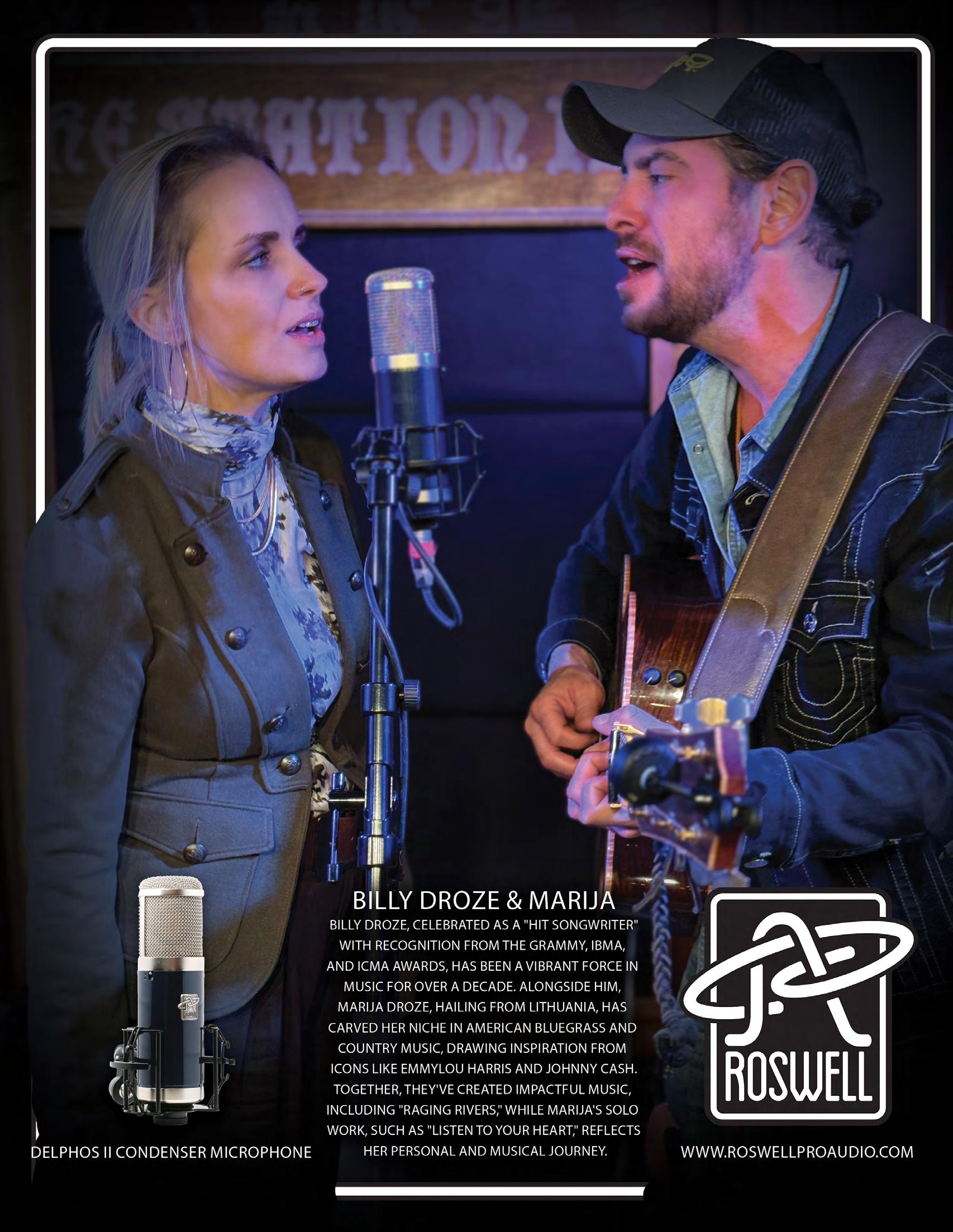
63

Ghigiarelli’s created a rectangular pizza that defined the Old Forge style that numerous restaurants in the area now serve.
A light, crisp crust defines the Old Forge style and can be red or white. The red pizza features a sweet tomato, diced onions, and a blend of cheeses that may include mozzarella, American and cheddar.
Meanwhile, the white pizza is stuffed with a layer of dough on top and bottom. The top is covered in herbs and onion, and the inside is filled with cheese and your choice of options like spinach or broccoli.
Regional pizza variations are special because they represent the unique communities and cultures from which they originate. Each variation reflects its region’s local ingredients, traditions, and culinary influences, which are evident in each bite. By celebrating local flavors and culinary traditions, these pizzas not only satisfy hunger but also tell a story of community pride, cultural heritage, and culinary innovation. They bring people together, foster a sense of belonging, and serve as a delicious reminder that makes each community unique.

64






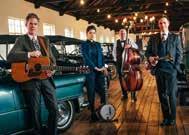

65 24 Hour Jammin’ Camping New Song Showcase Acoustic Kids PreFest Workshops Feisty Kids Camp Arts and Cra s Show RUNA HAYMAKERS THE STEEL WHEELS ADVANCED TICKETS ON SALE NOW! ADVANCED TICKETS ON SALE NOW! 8 INSTRUMENT CHAMPIONSHIPS MORE THAN 113,000 IN PRIZES! 8 INSTRUMENT CHAMPIONSHIPS MORE THAN 113,000 IN PRIZES! CHRIS JONES & THE NIGHT DRIVERS THE BAREFOOT MOVEMENT Call (620)221 3250 or locate everything Walnut Valley Festival at www.wvfest.com
& THE PARTYGRASS BOYS P.O. Box 245 Win eld, KS 67156
PIXIE



FAN PHOTOS
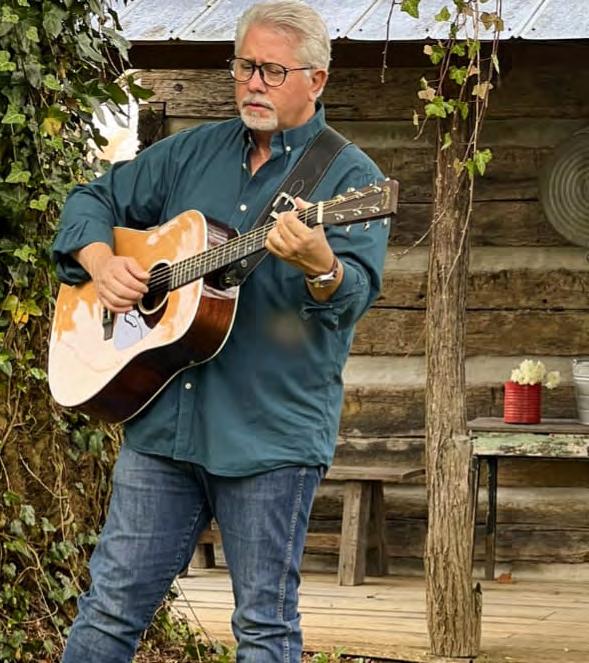
66
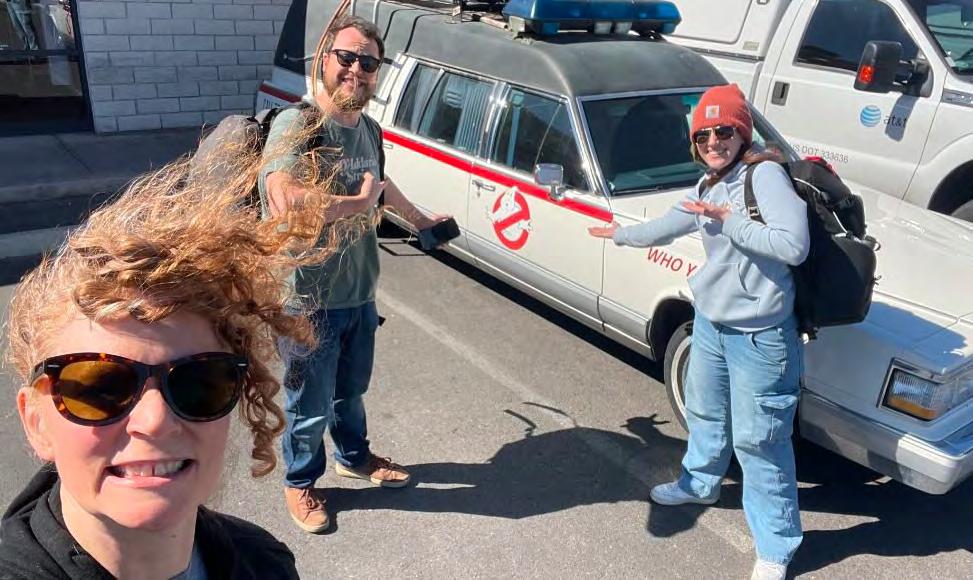
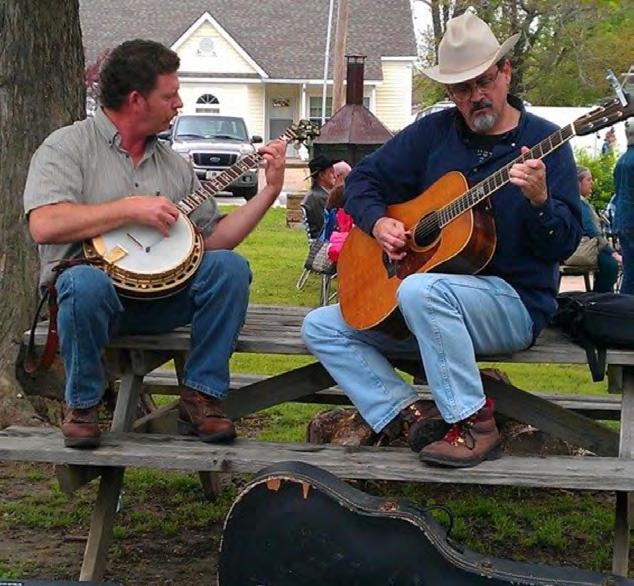



67
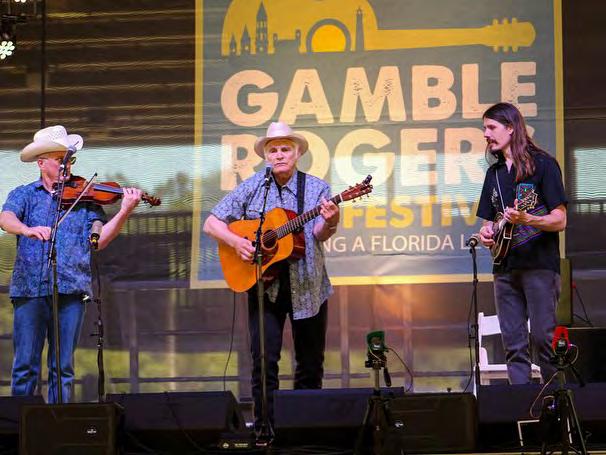




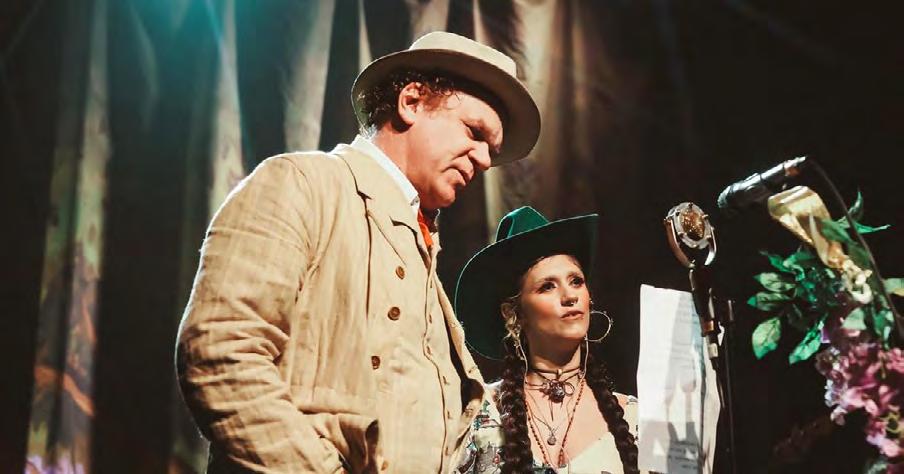
68

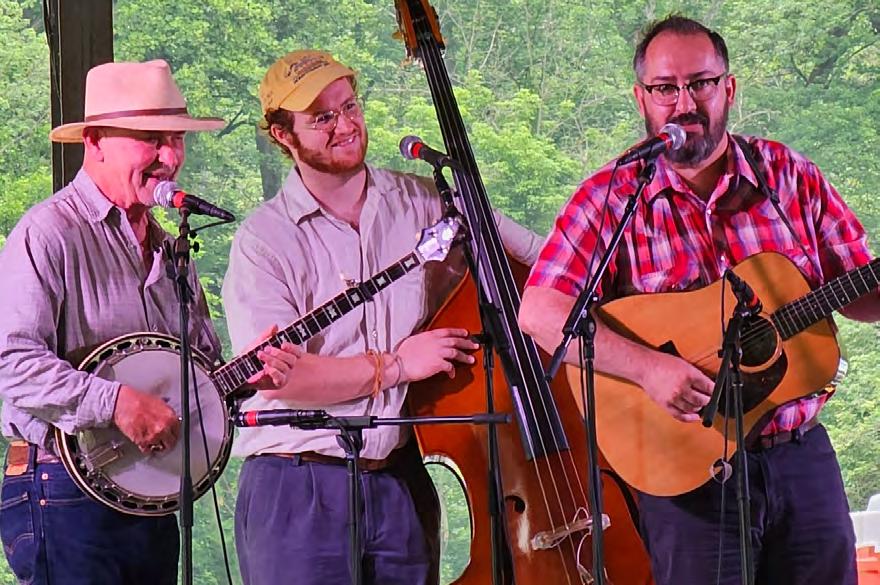




69

70







































































 by Susan Marquez
by Susan Marquez


































































